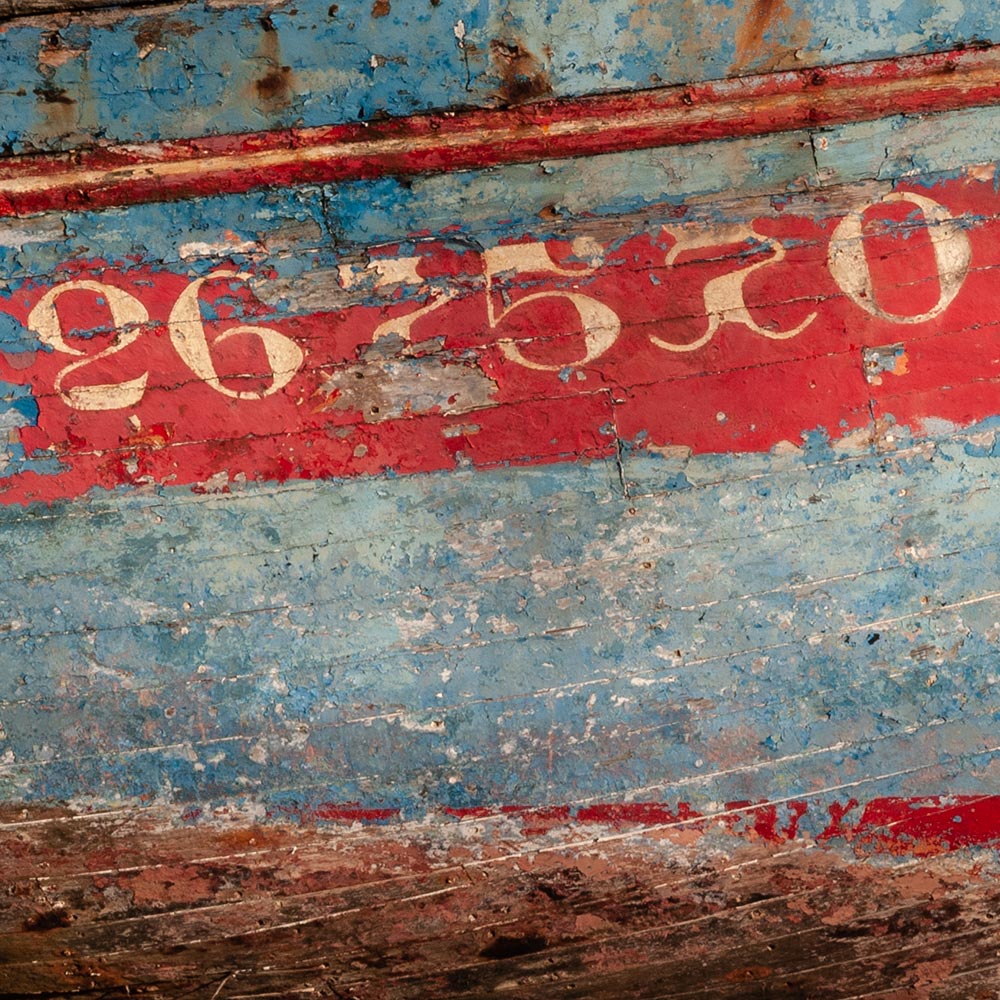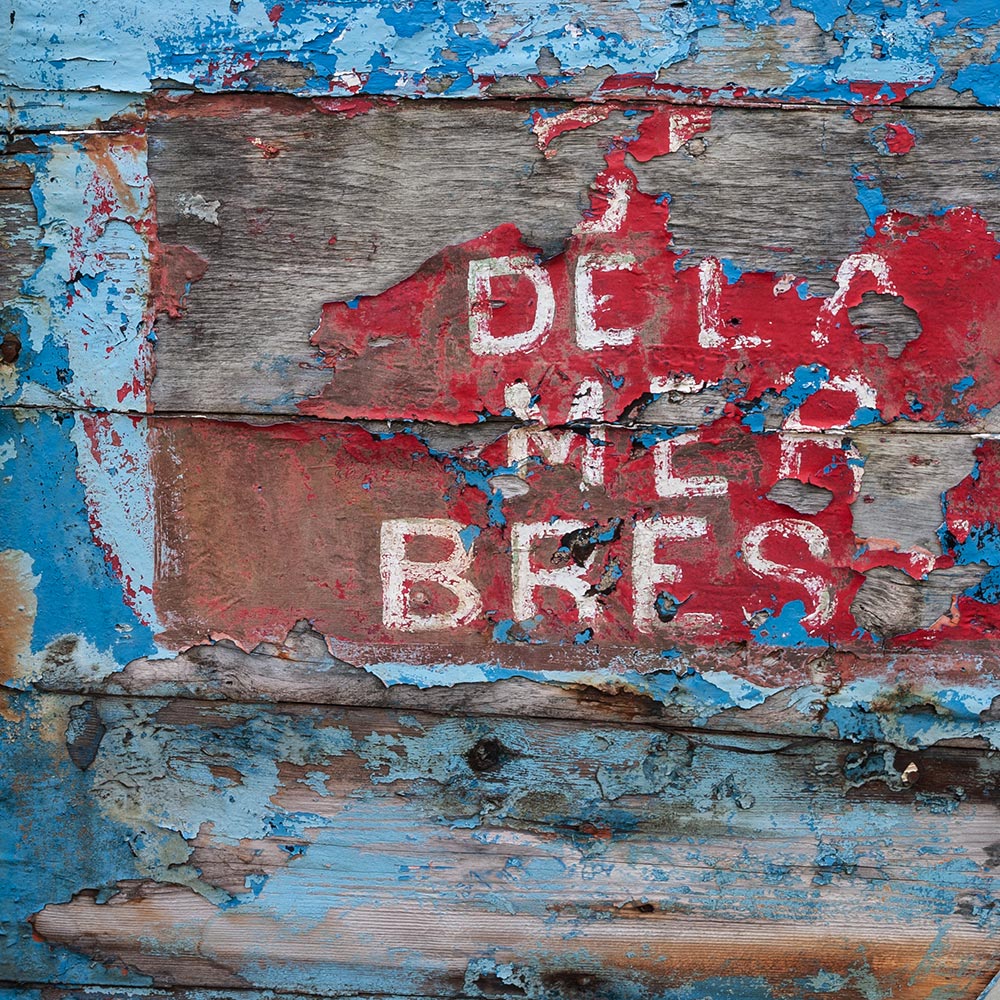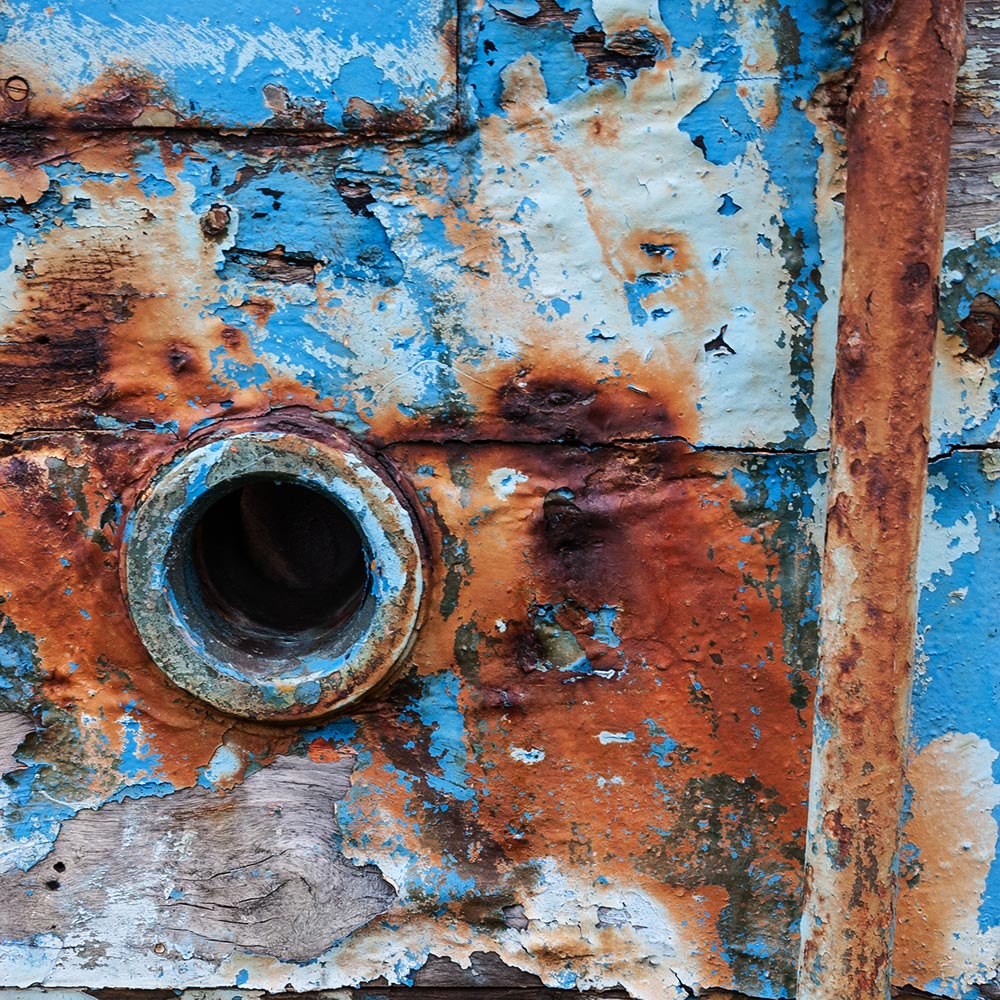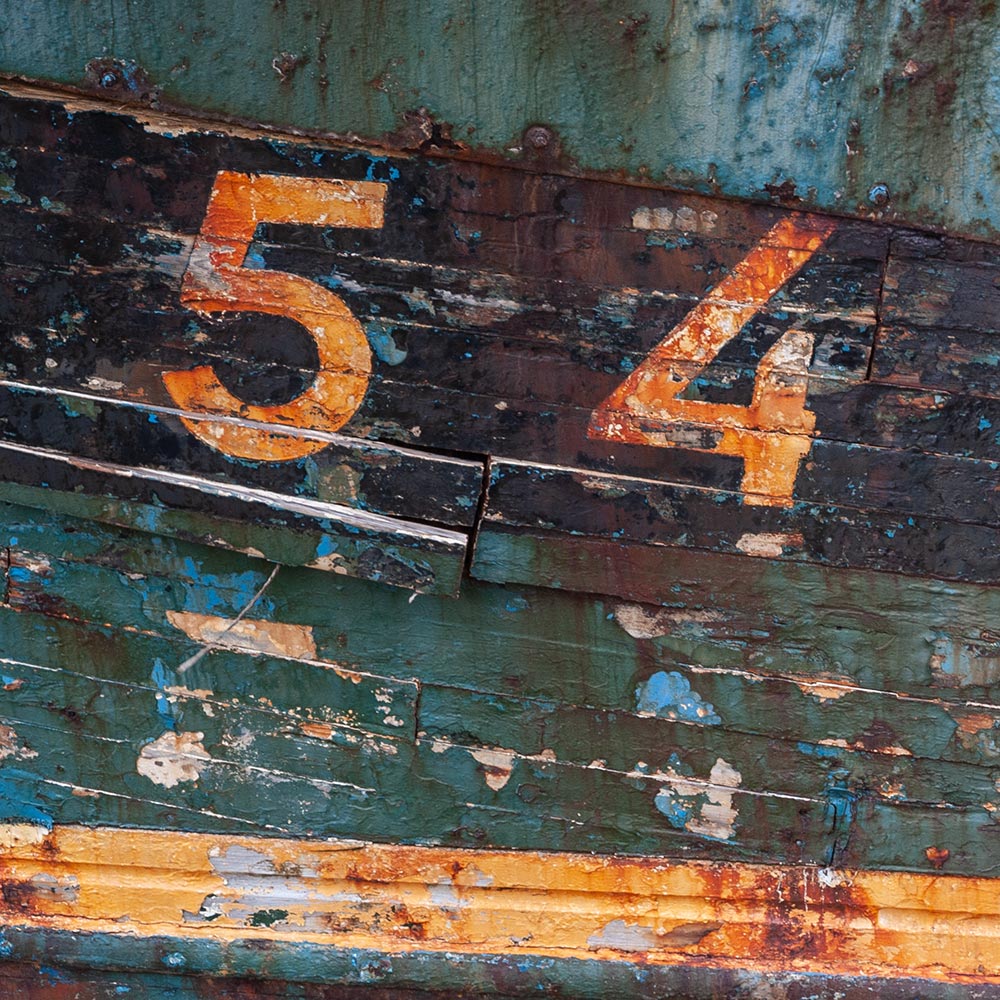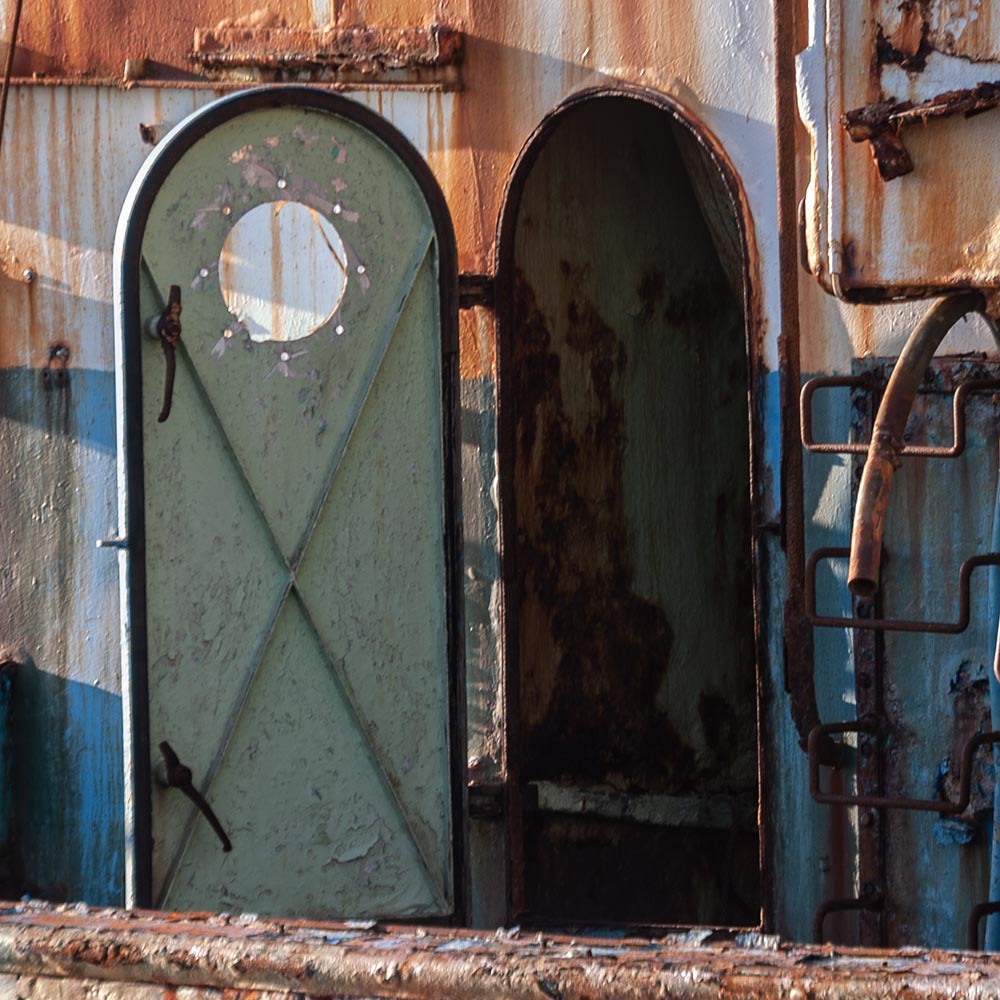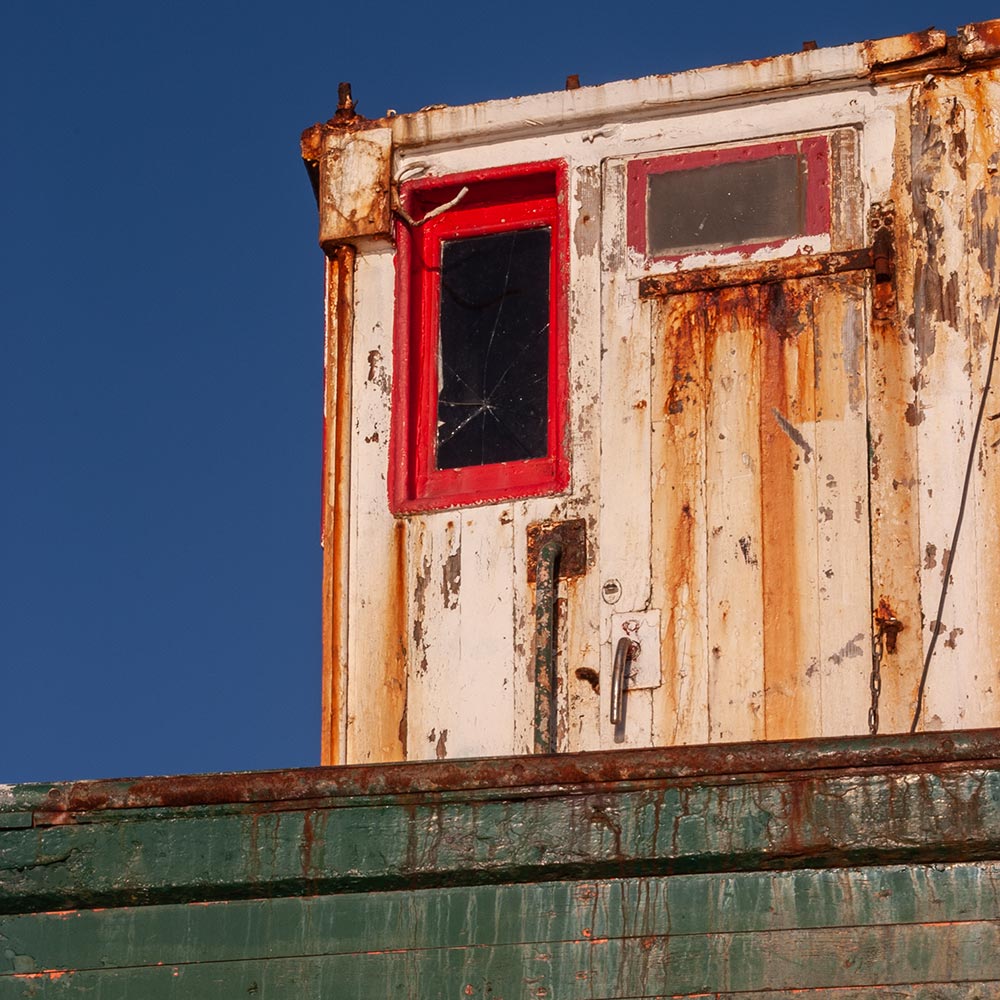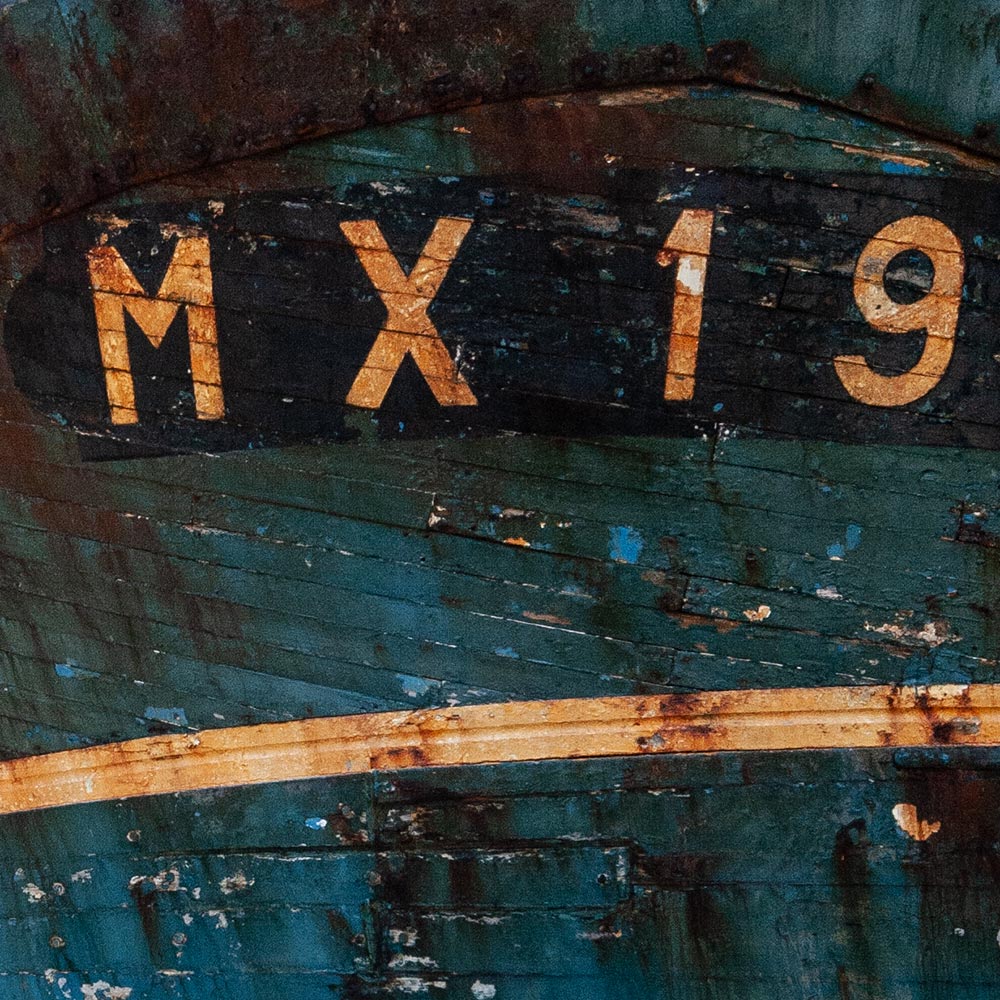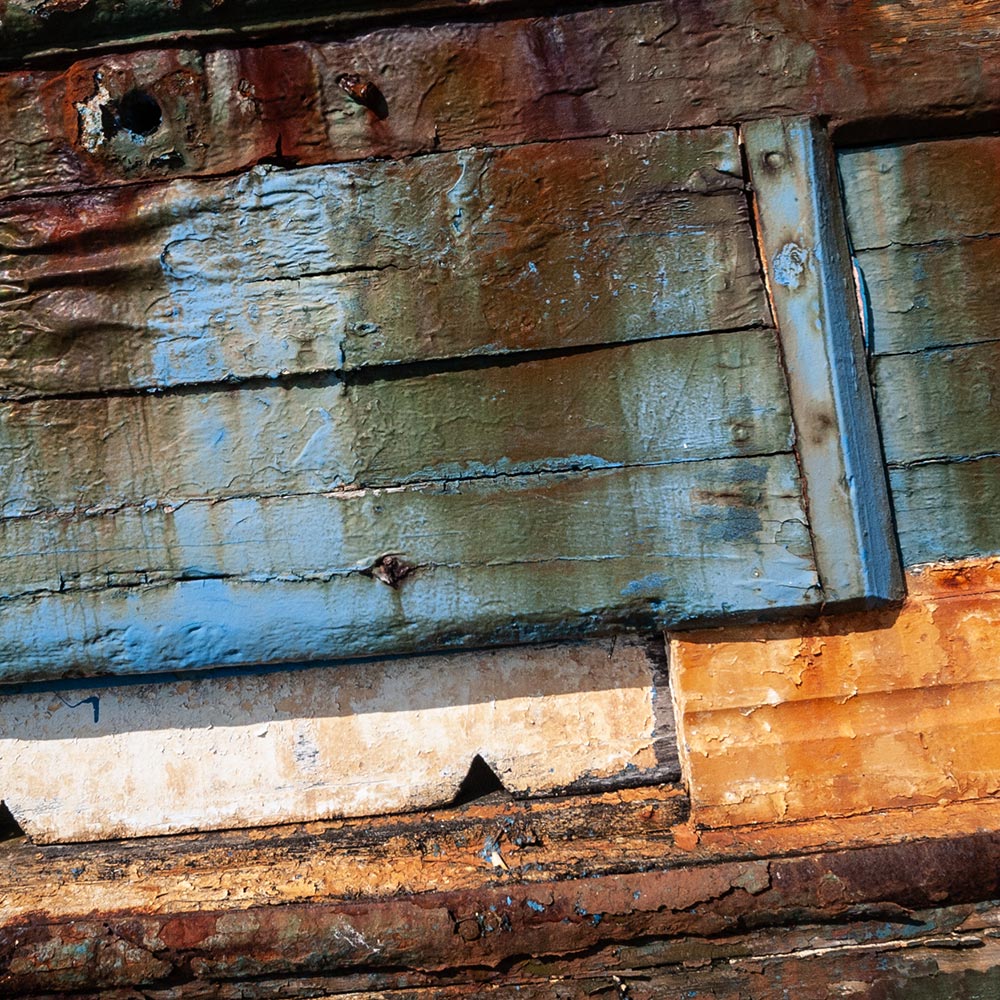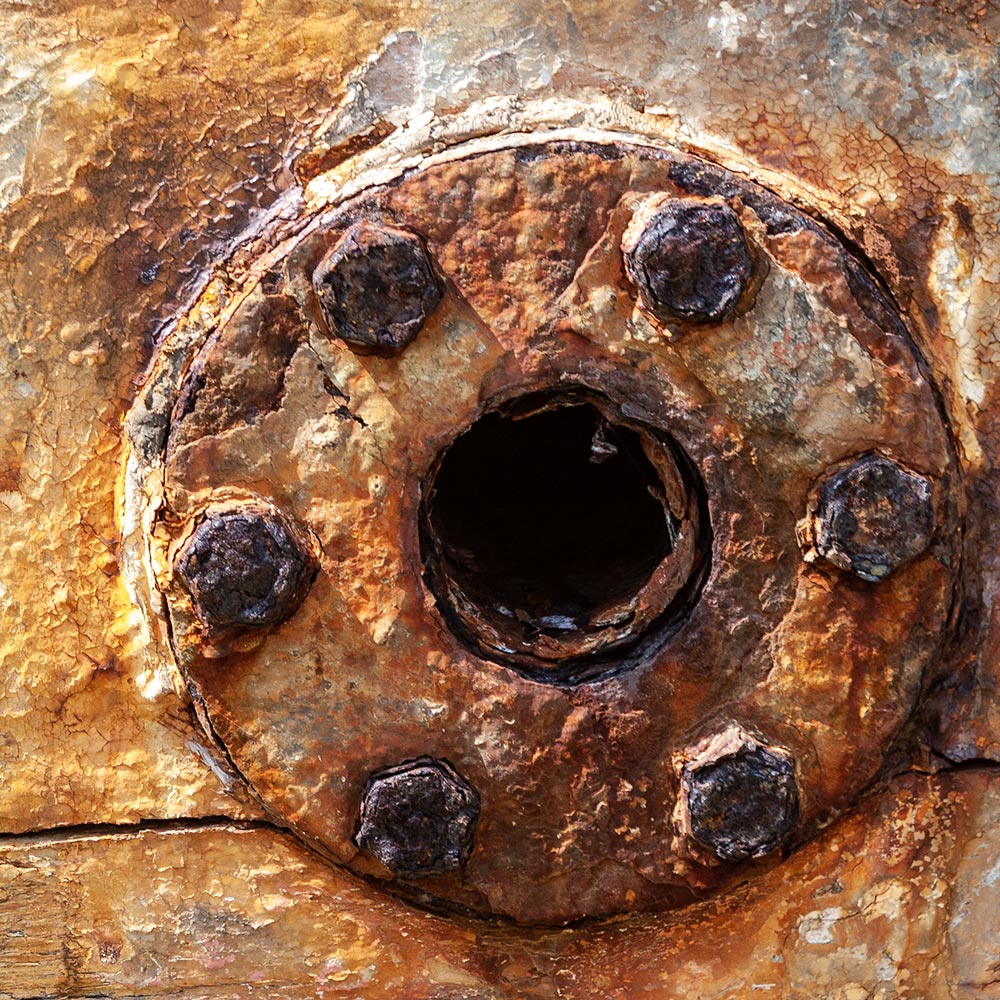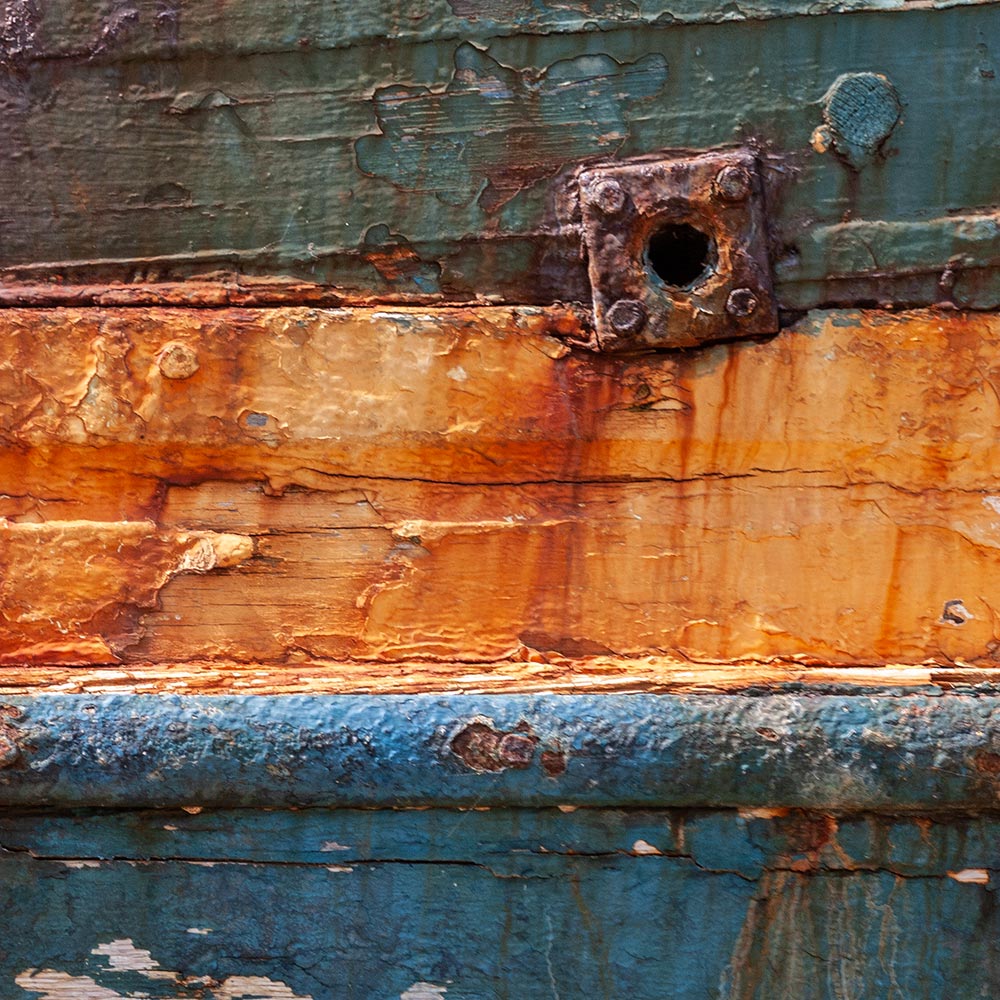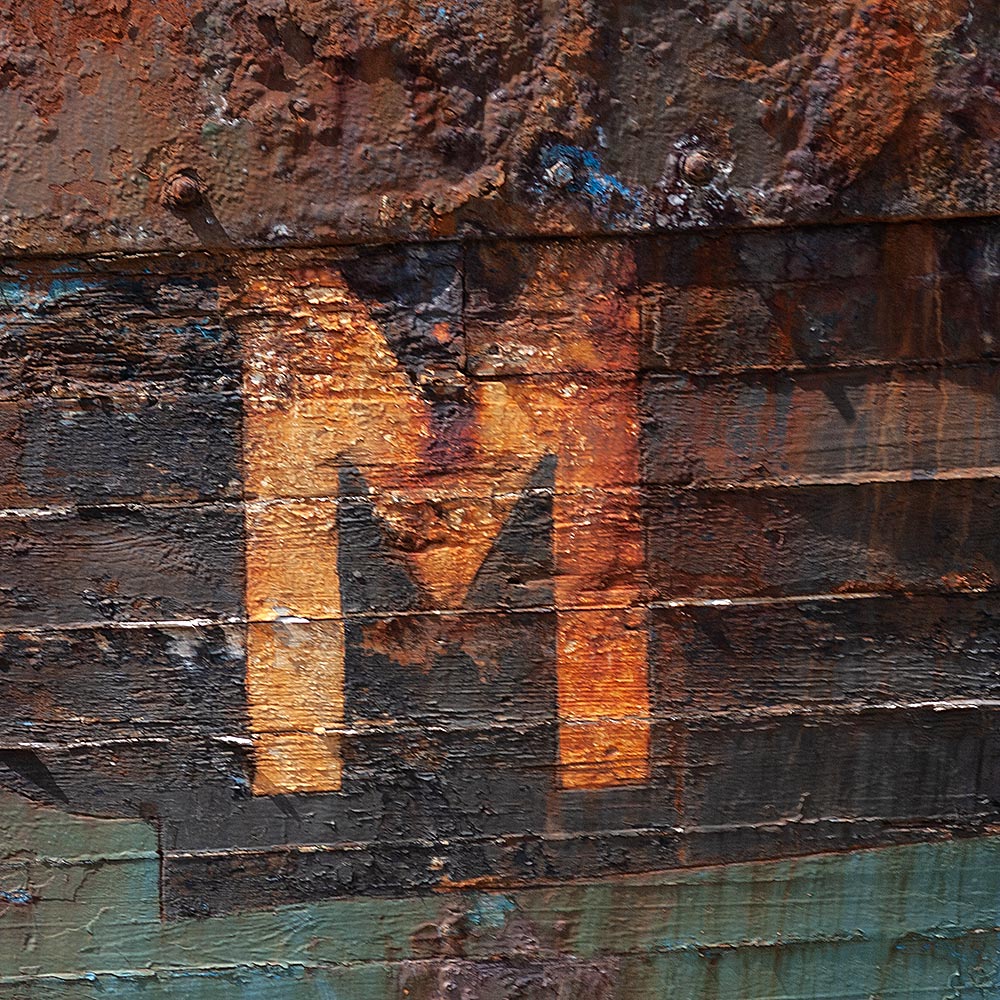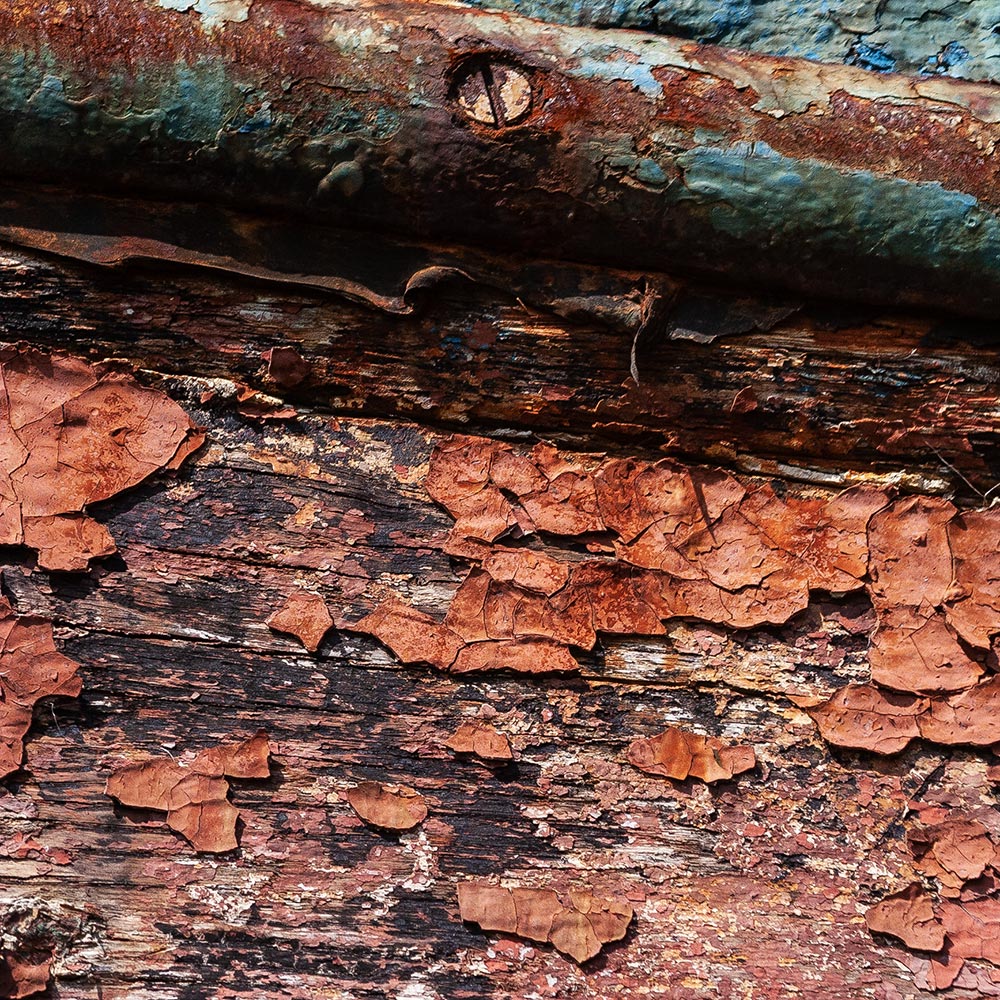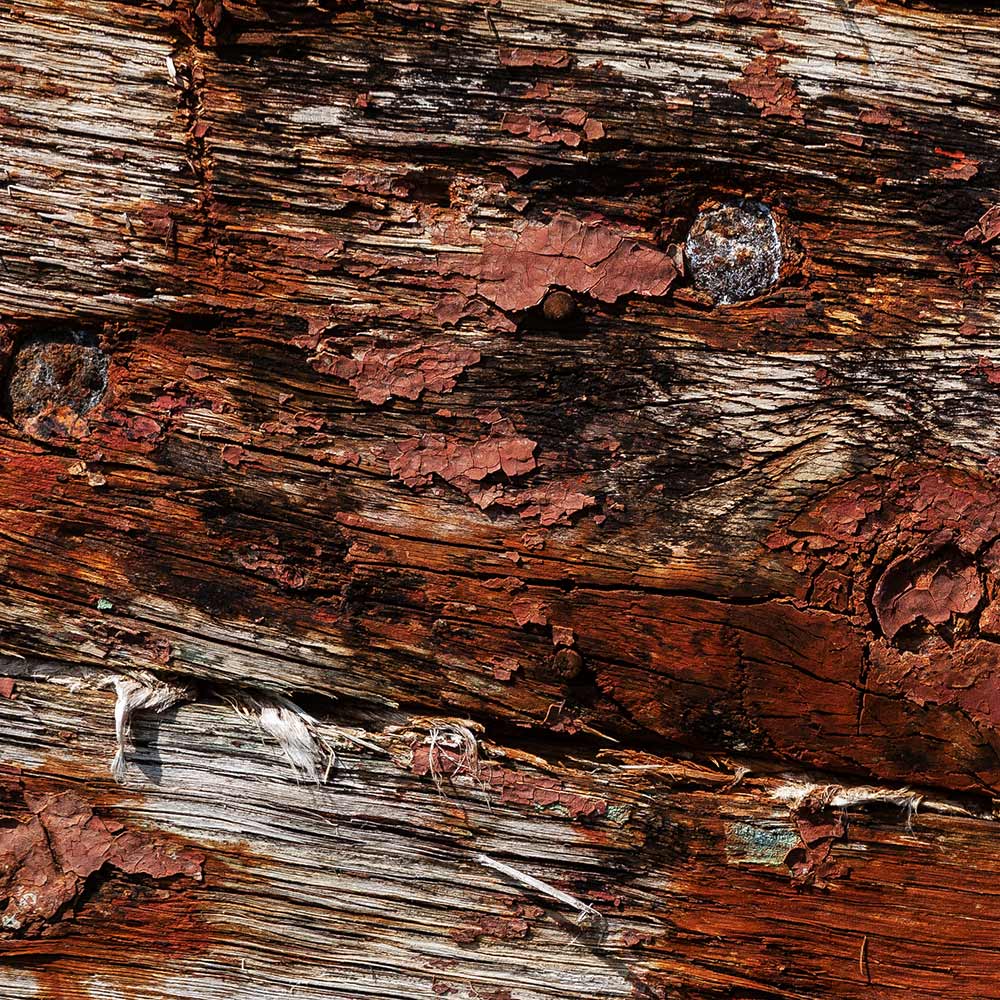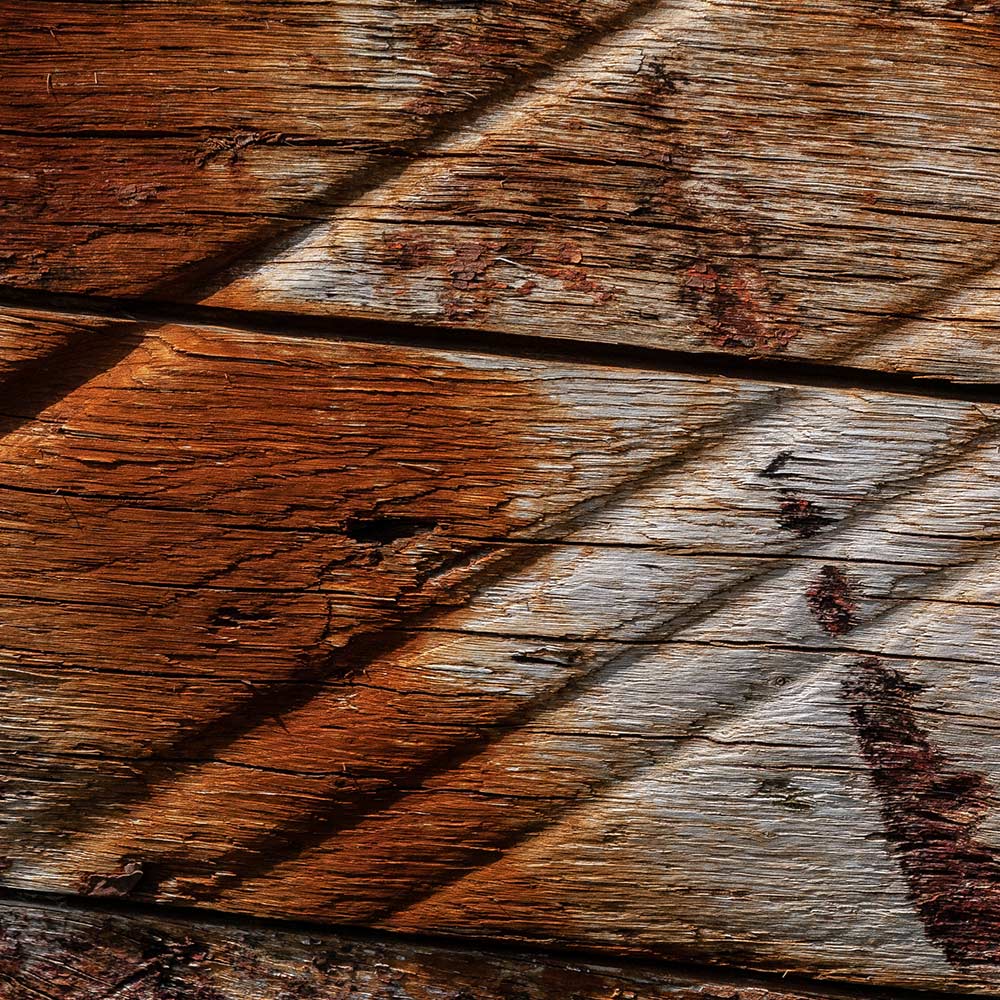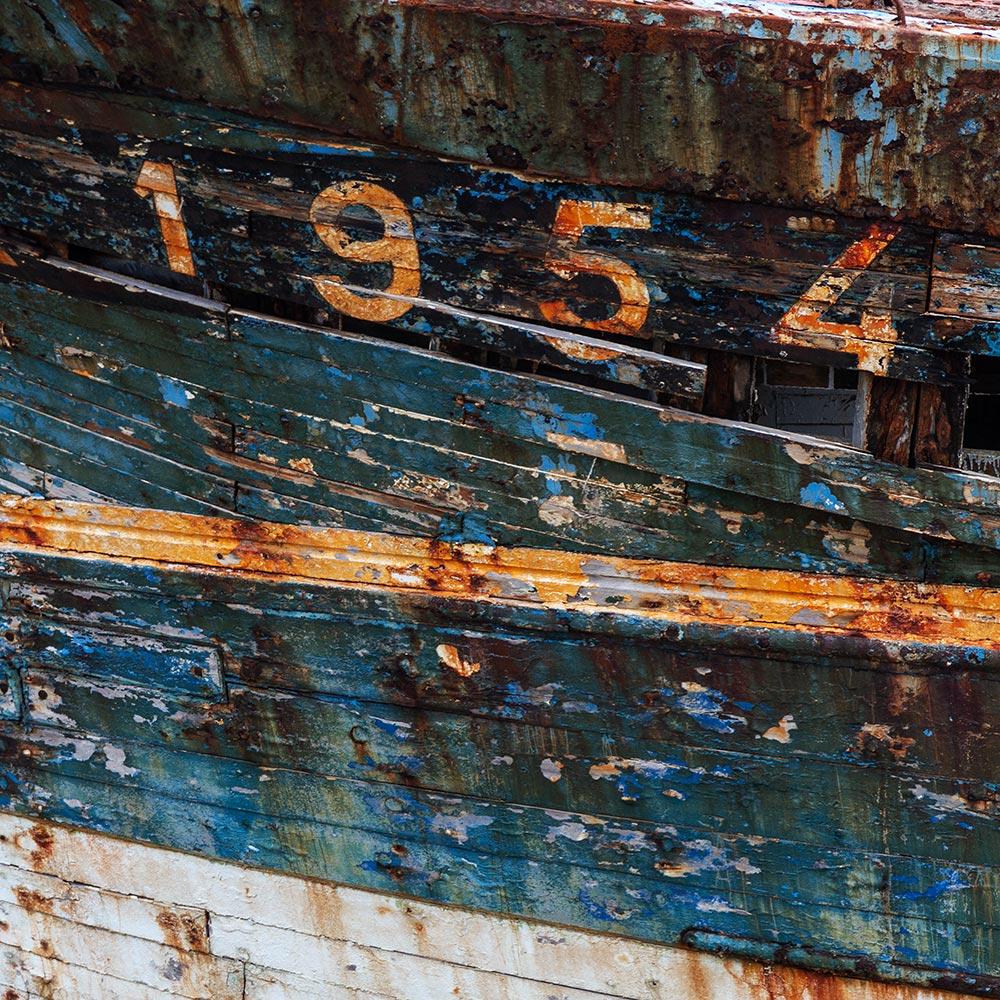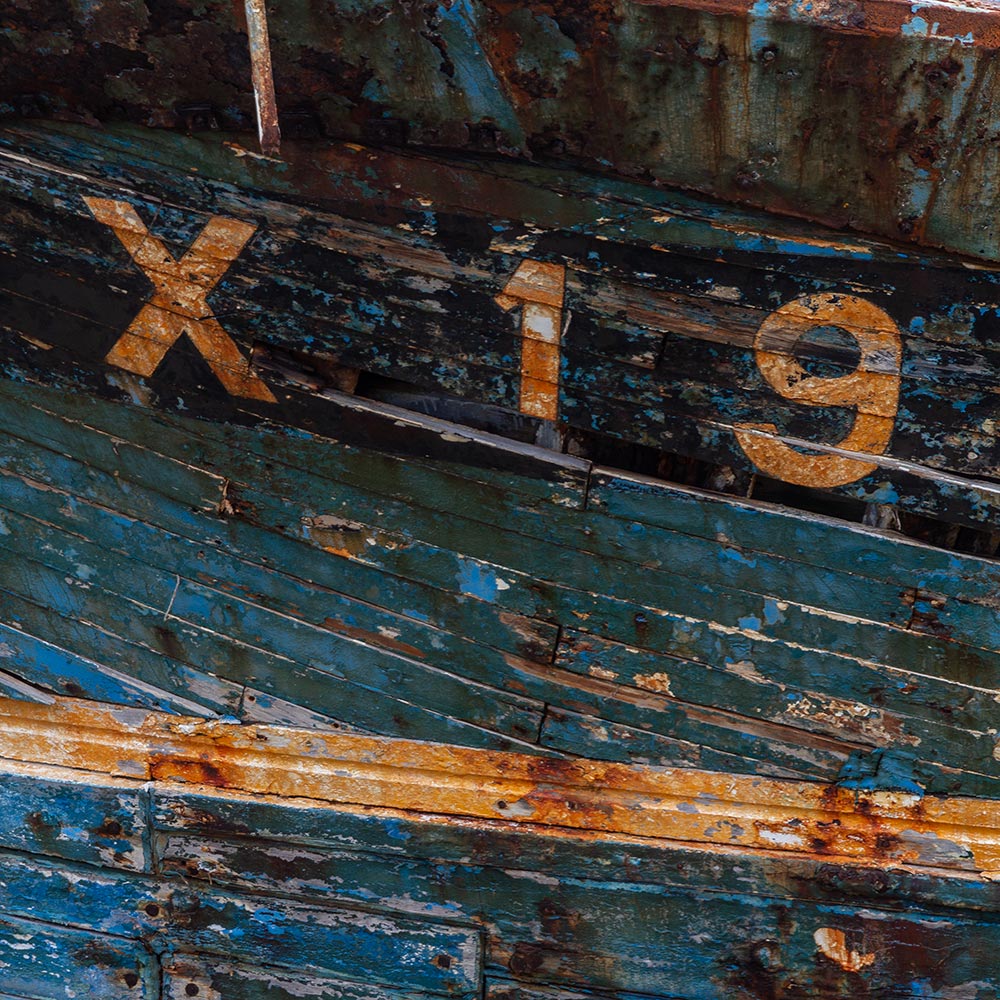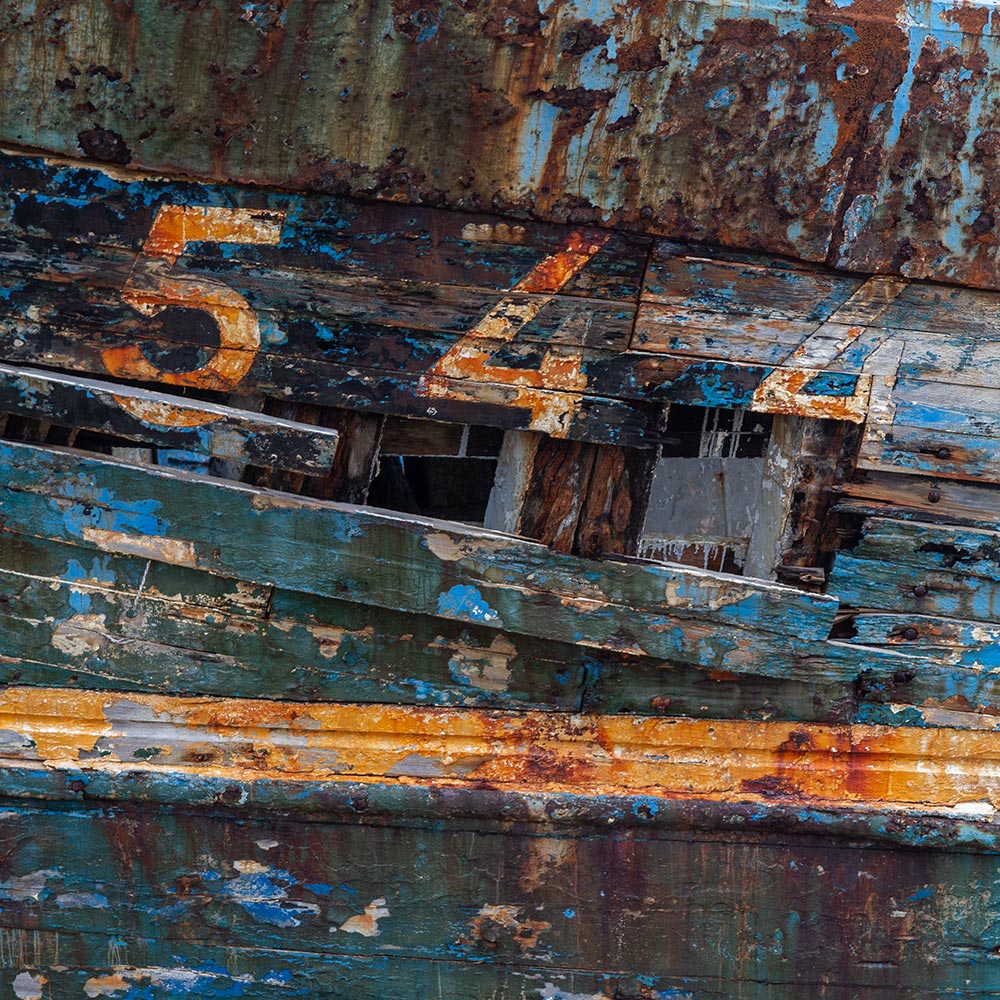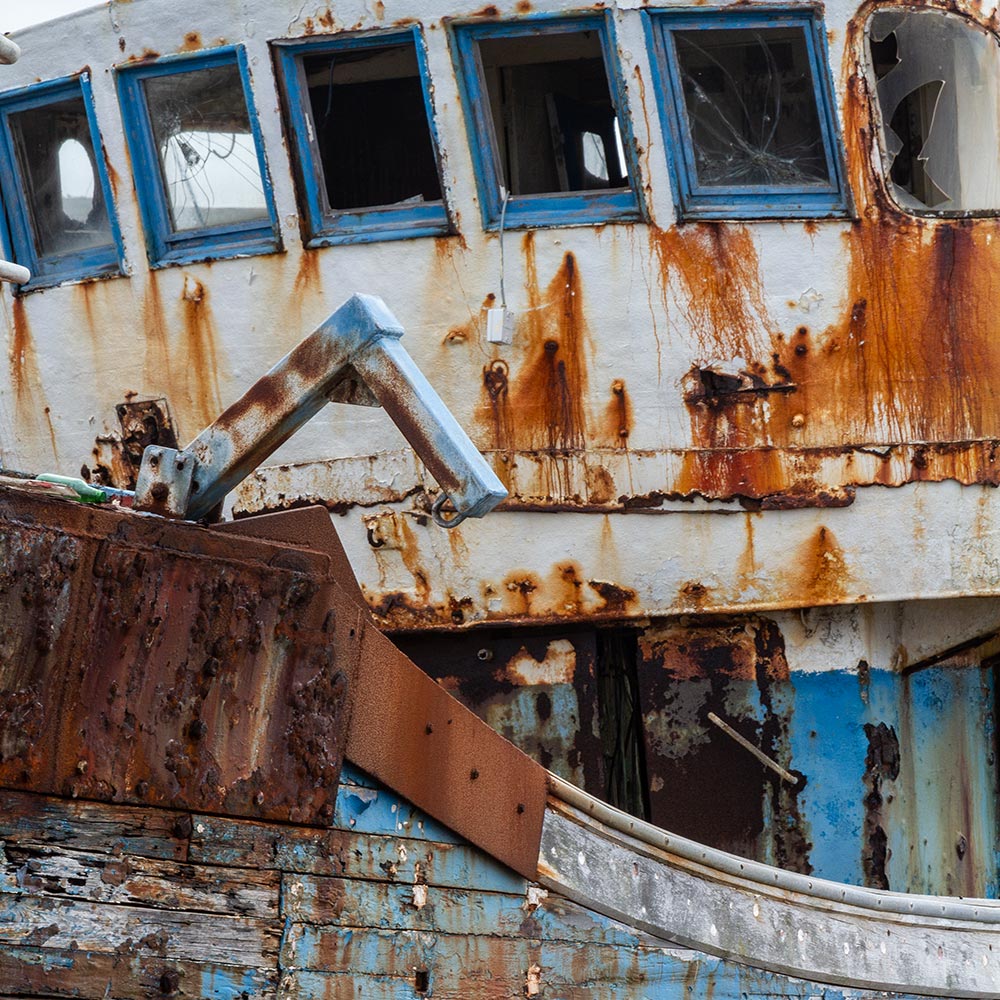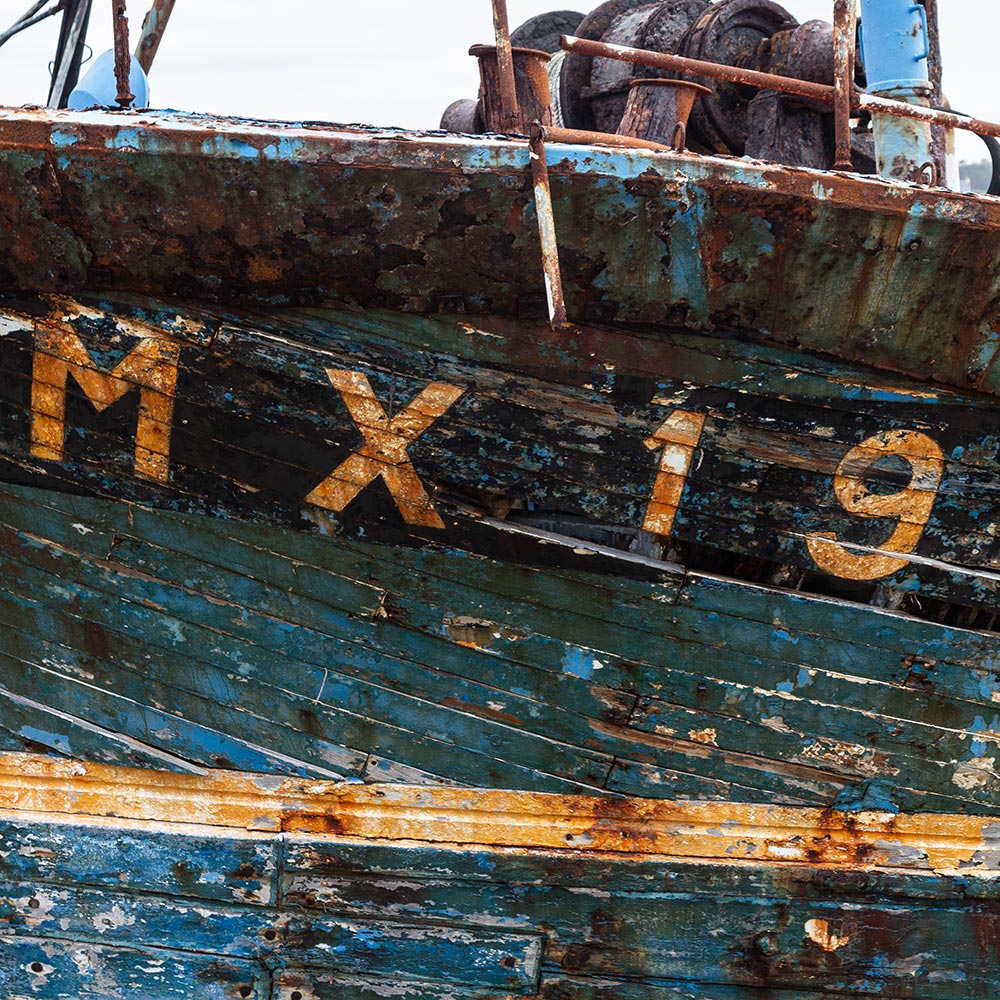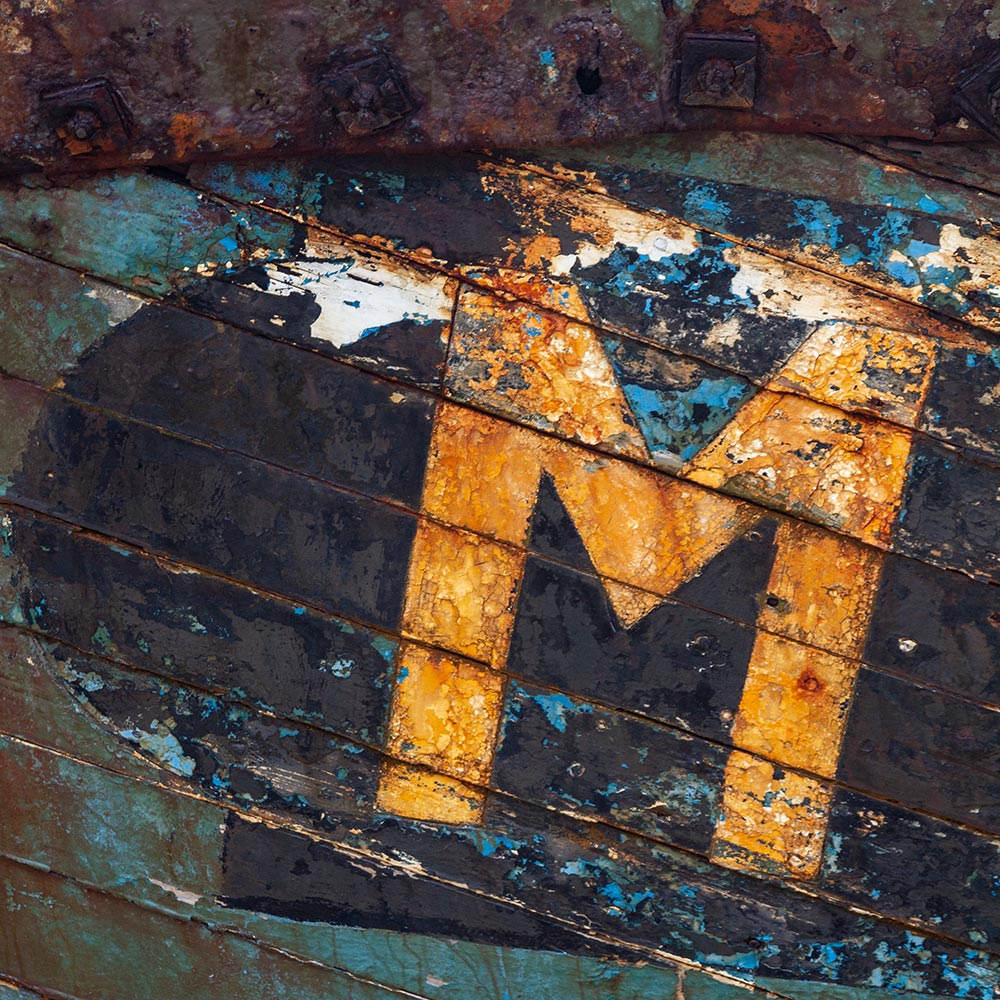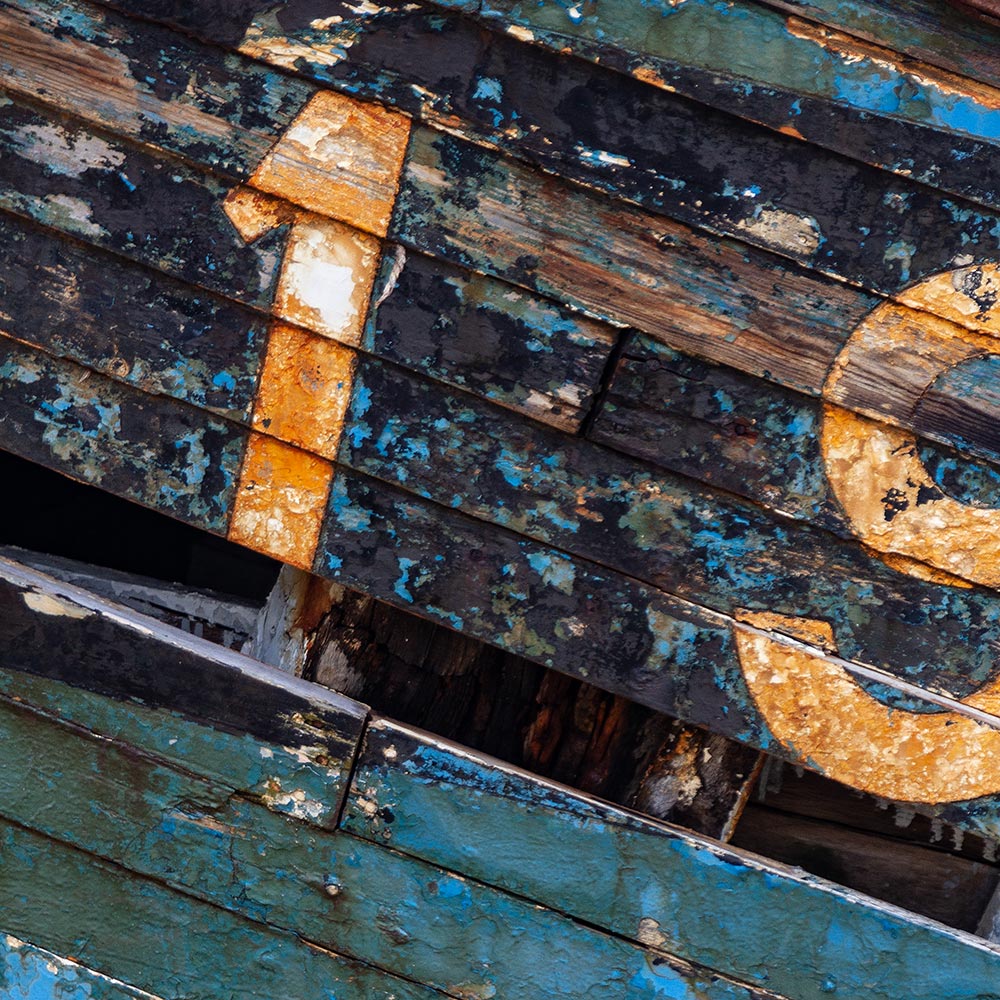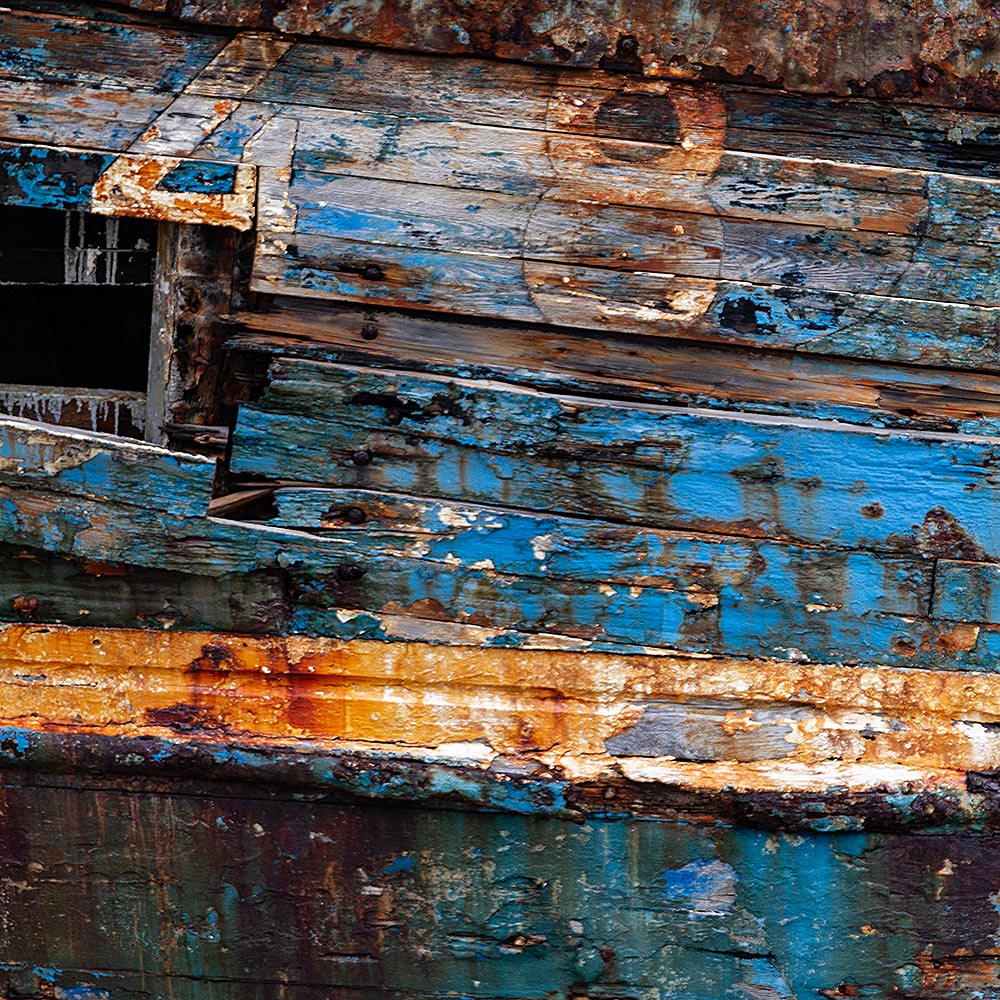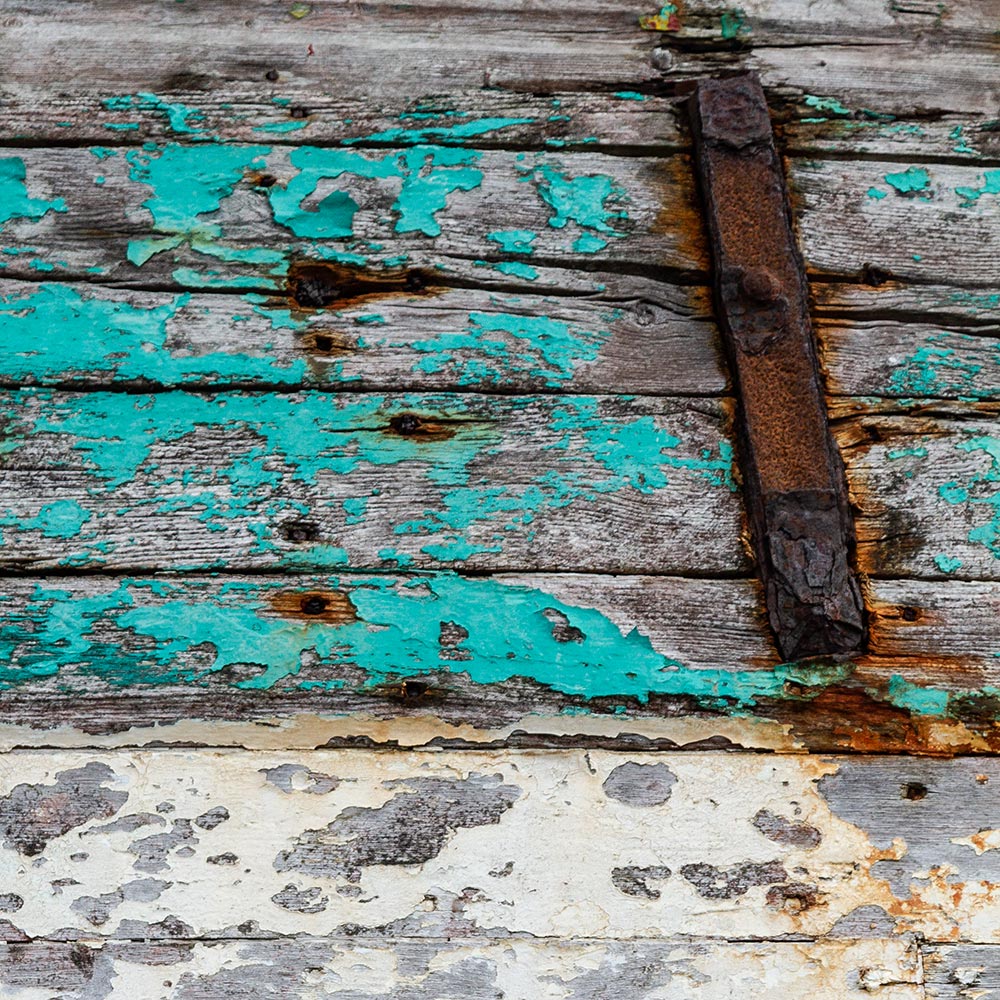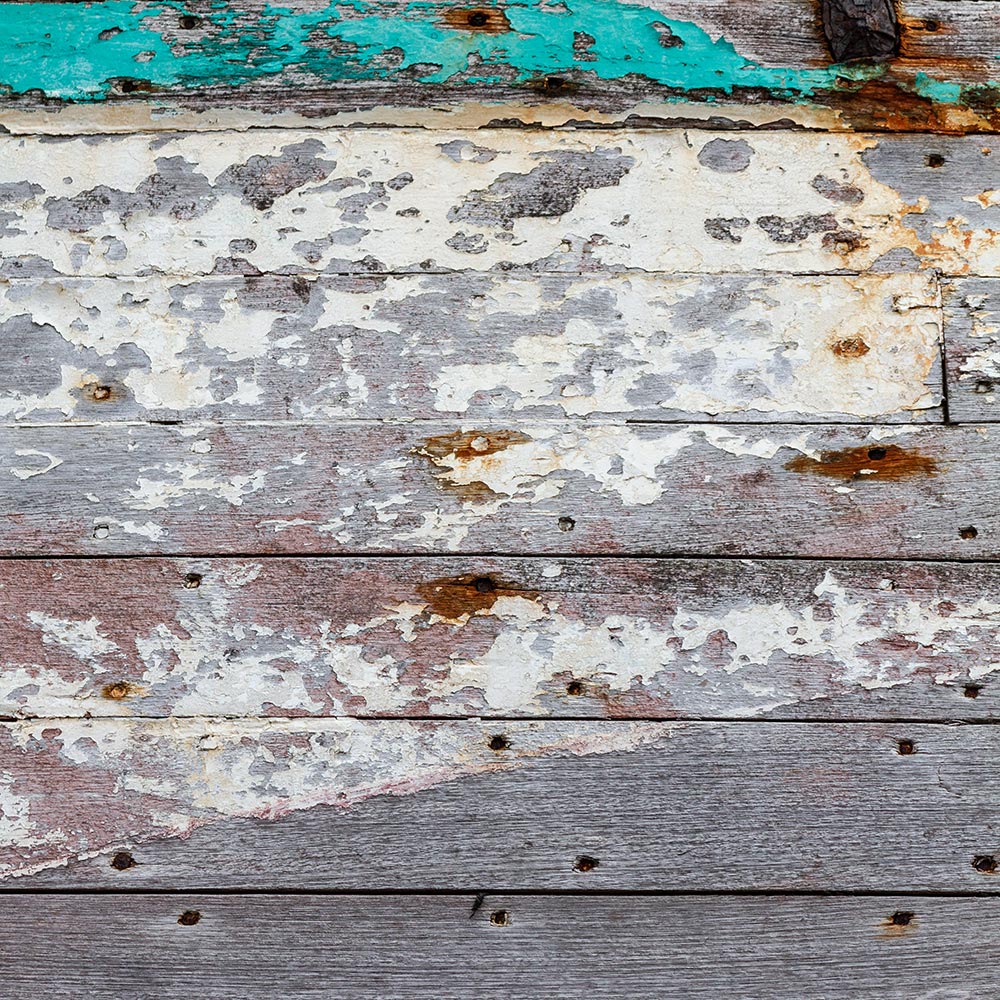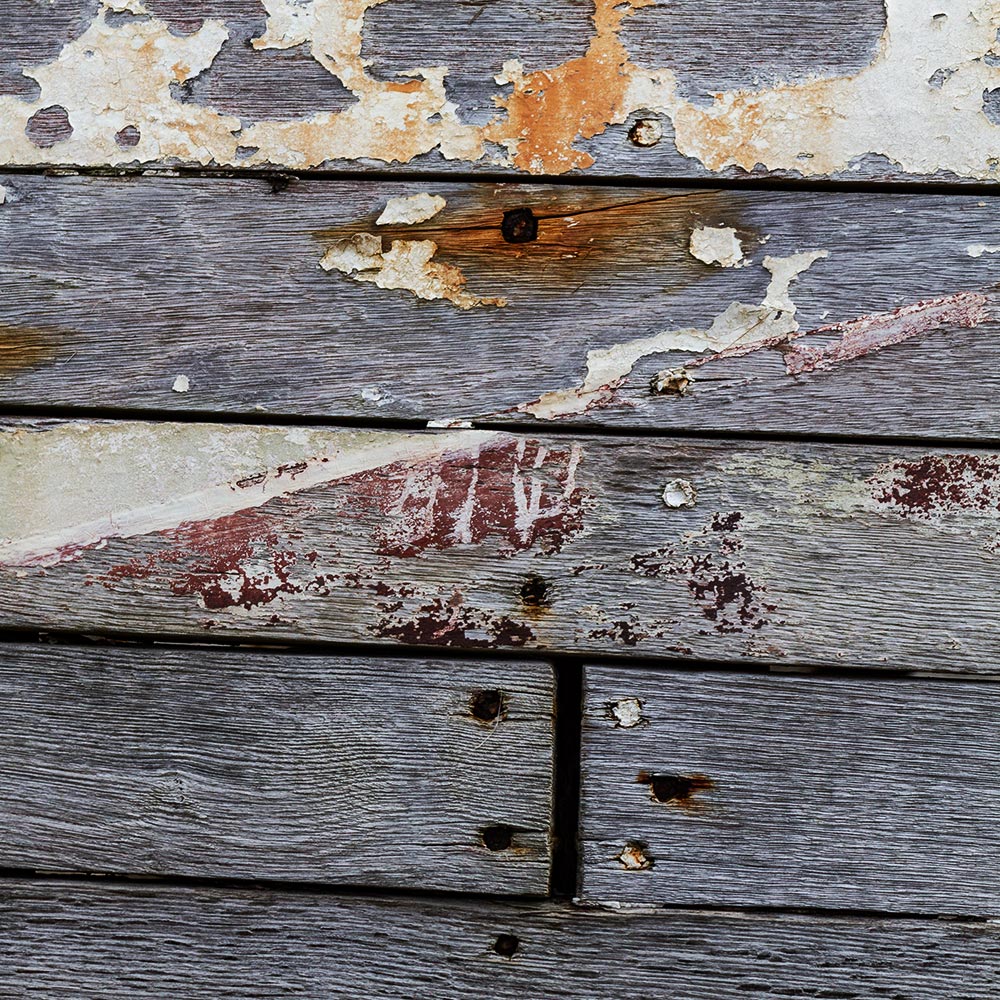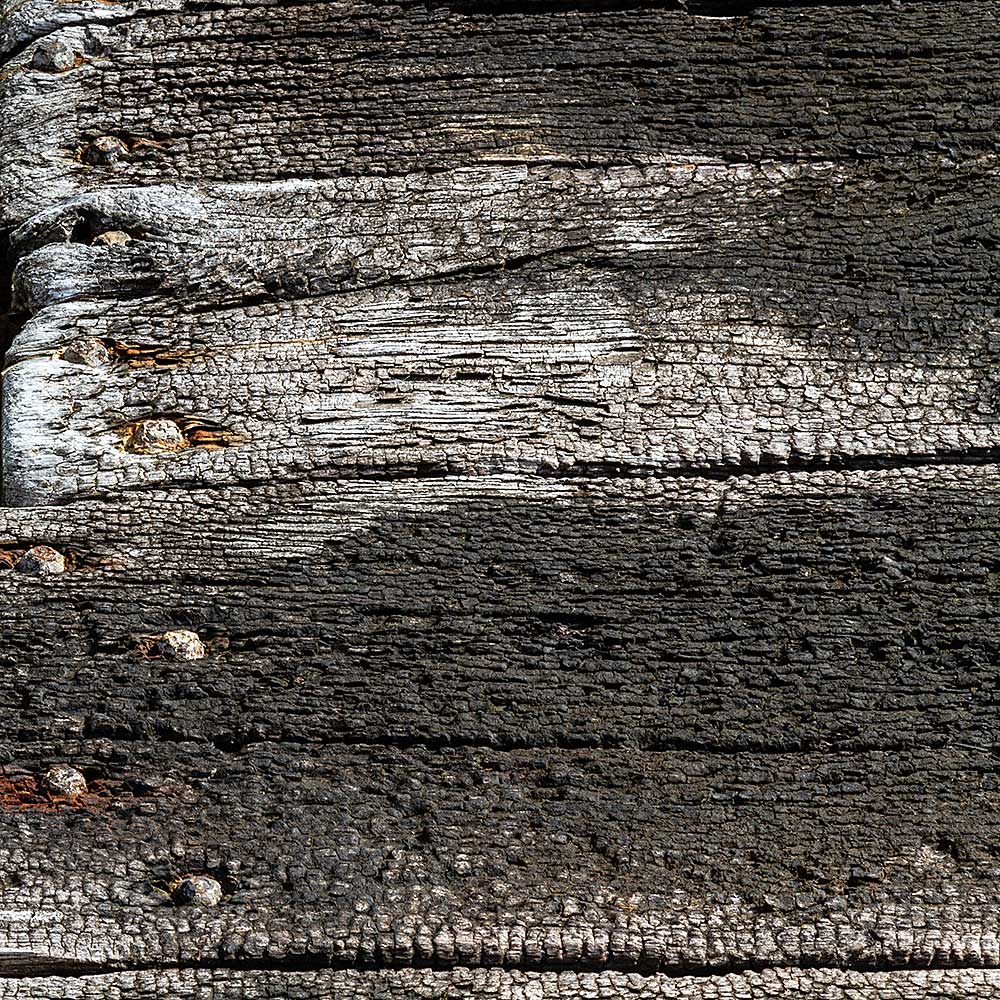
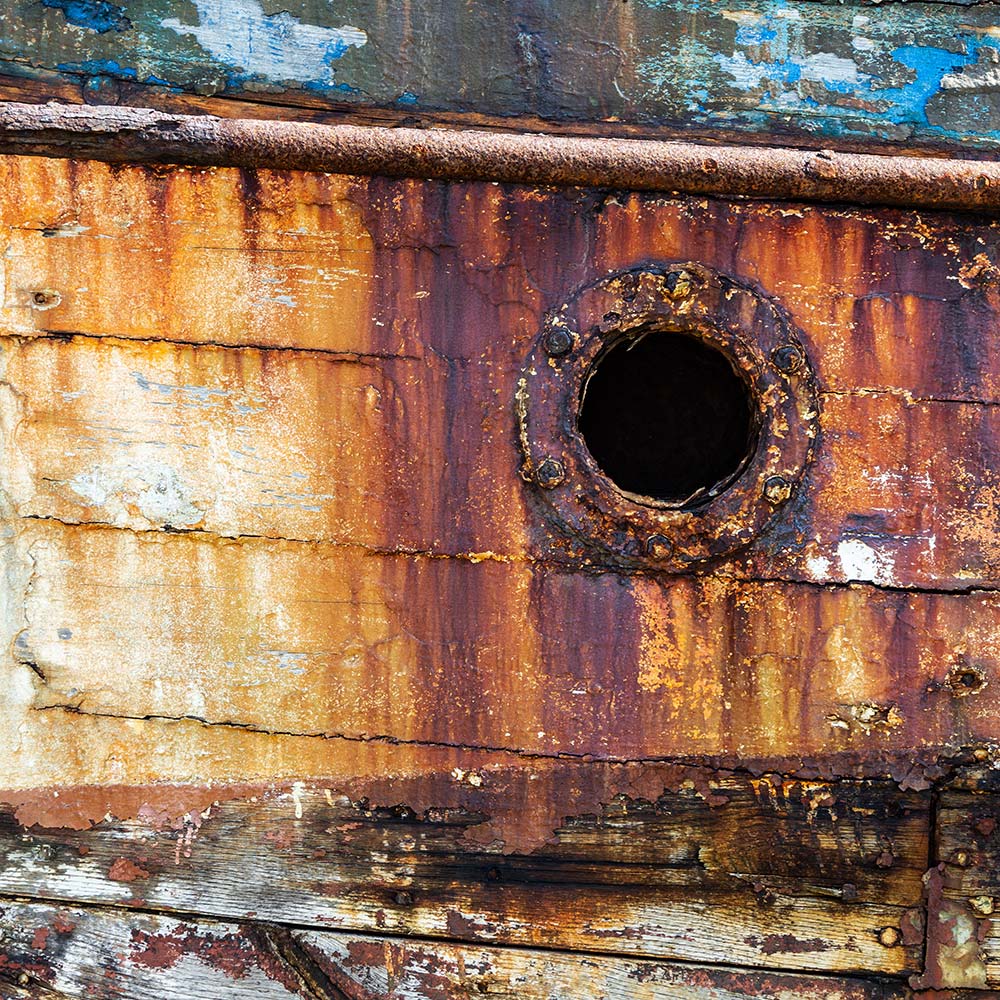
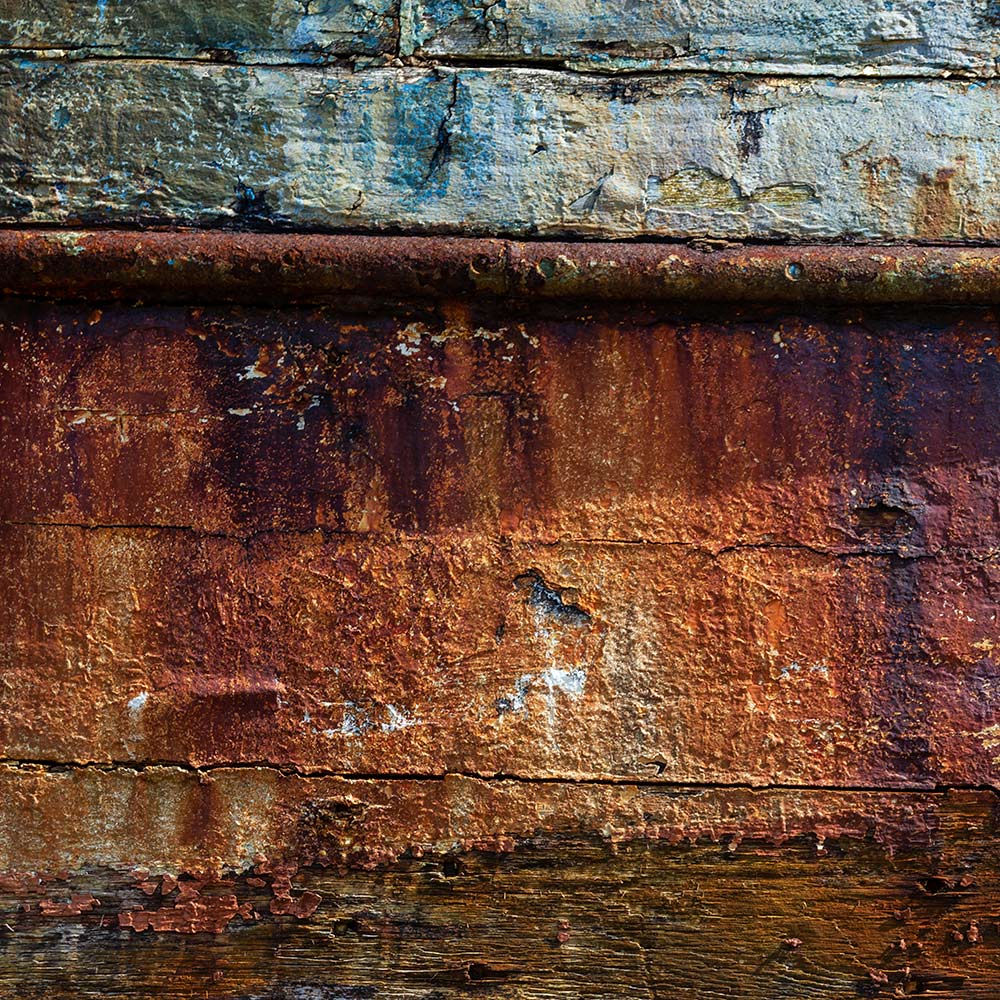
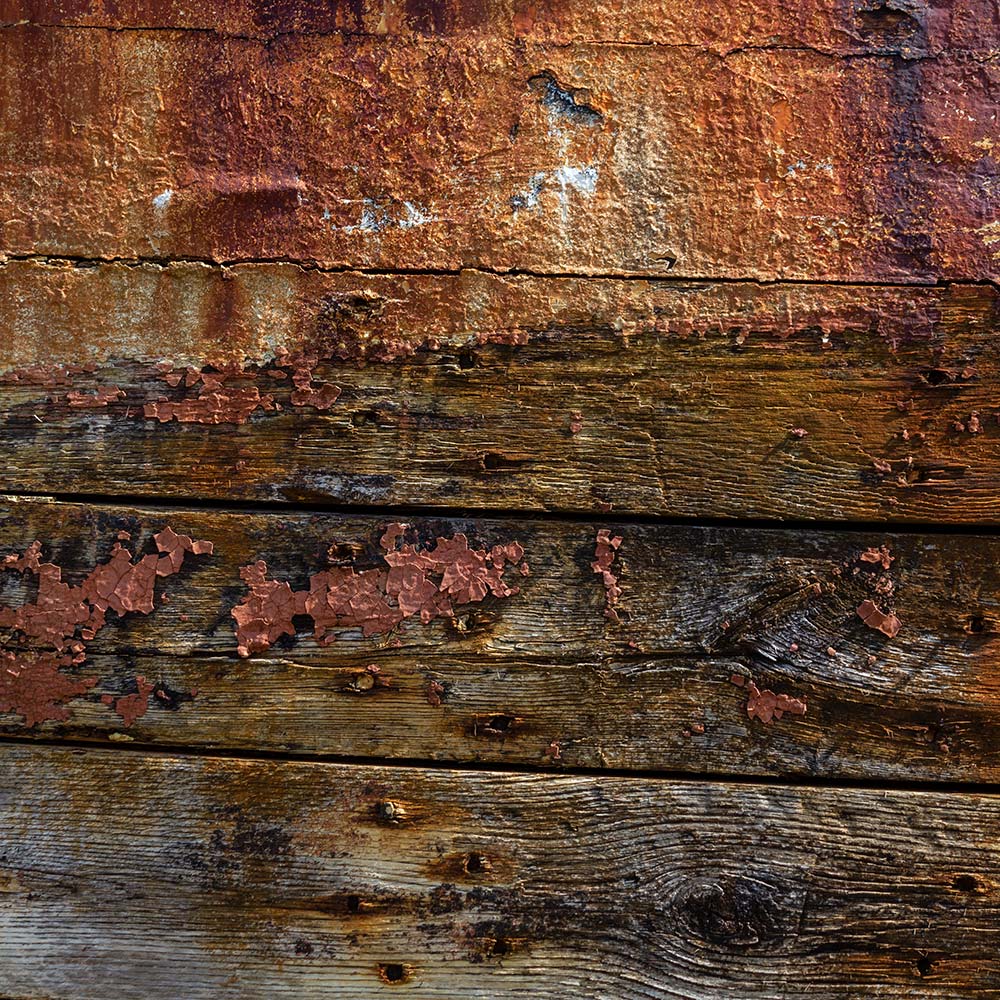
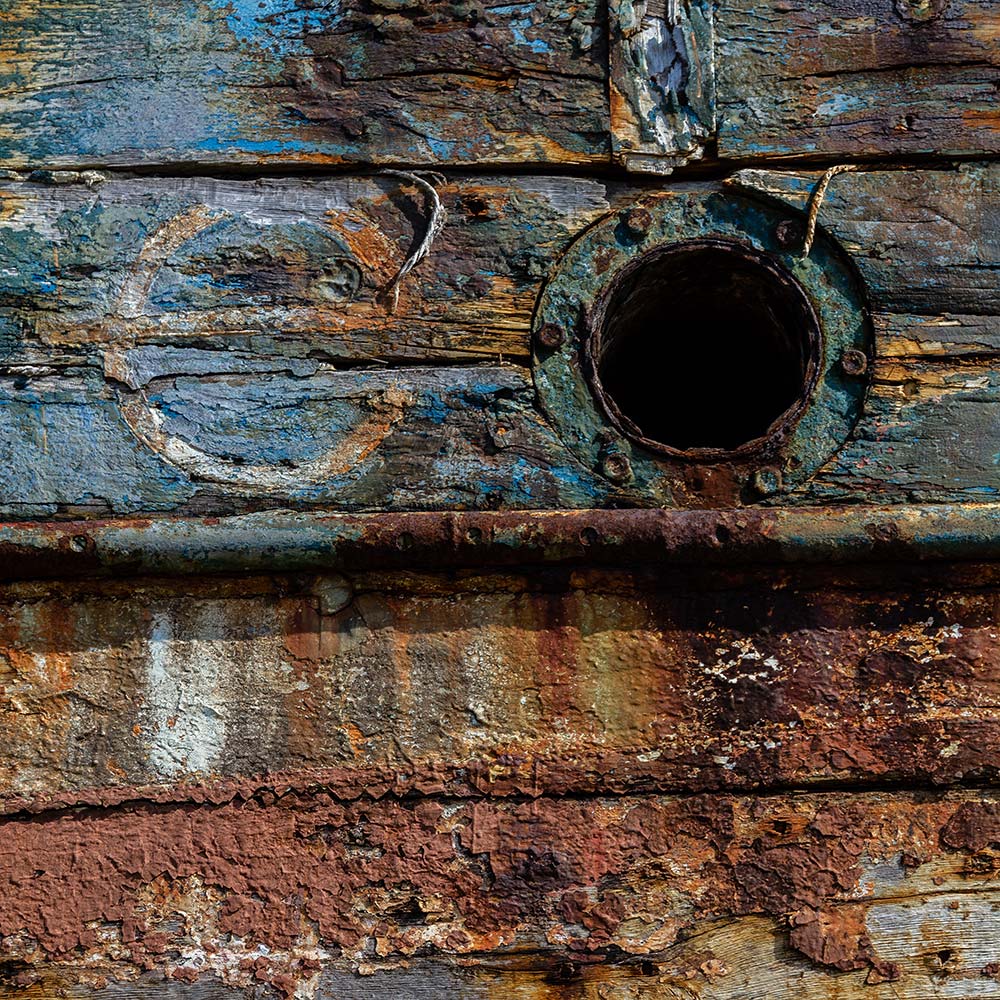
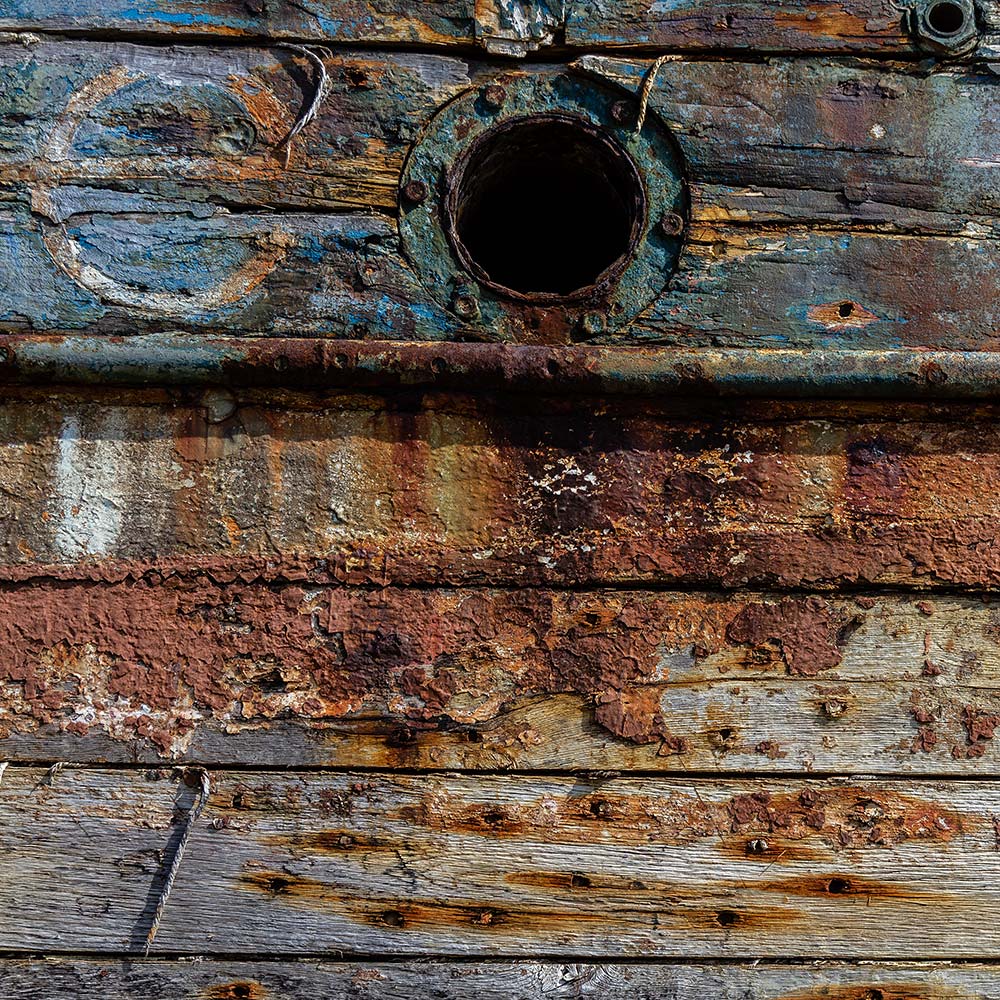
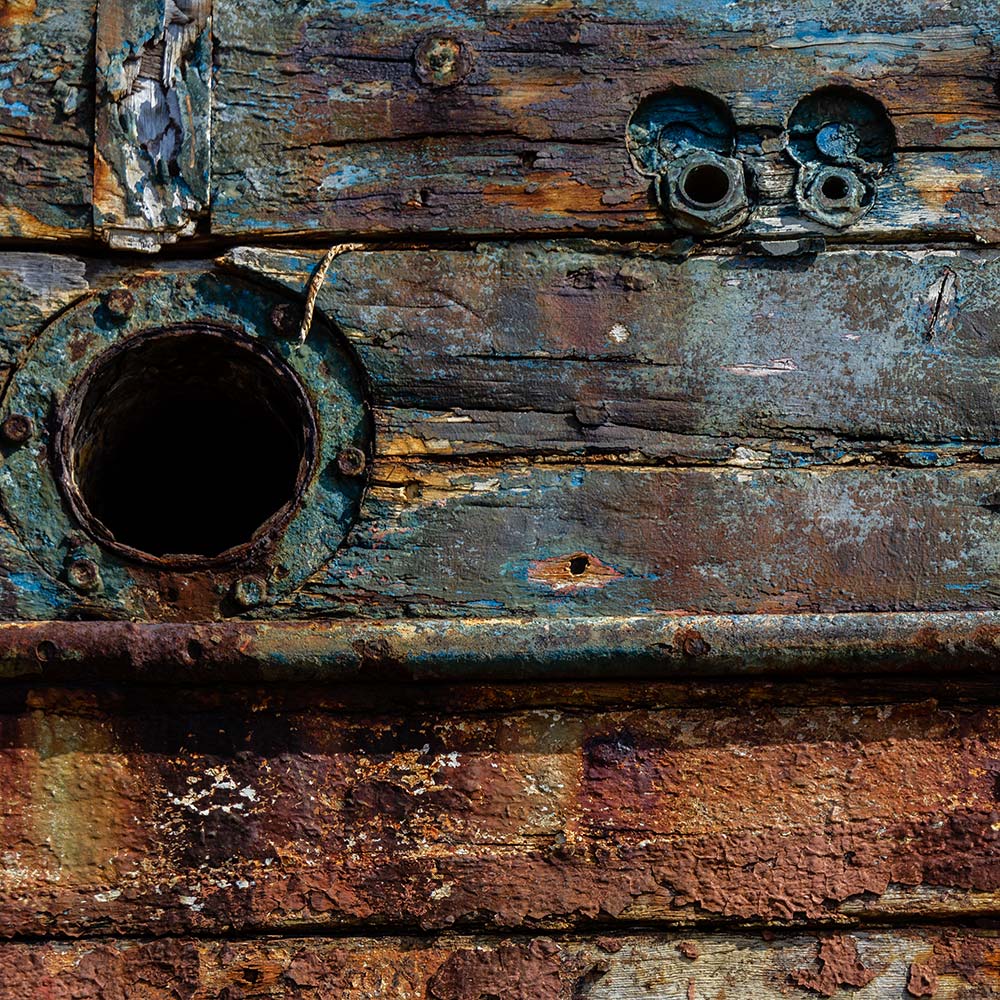
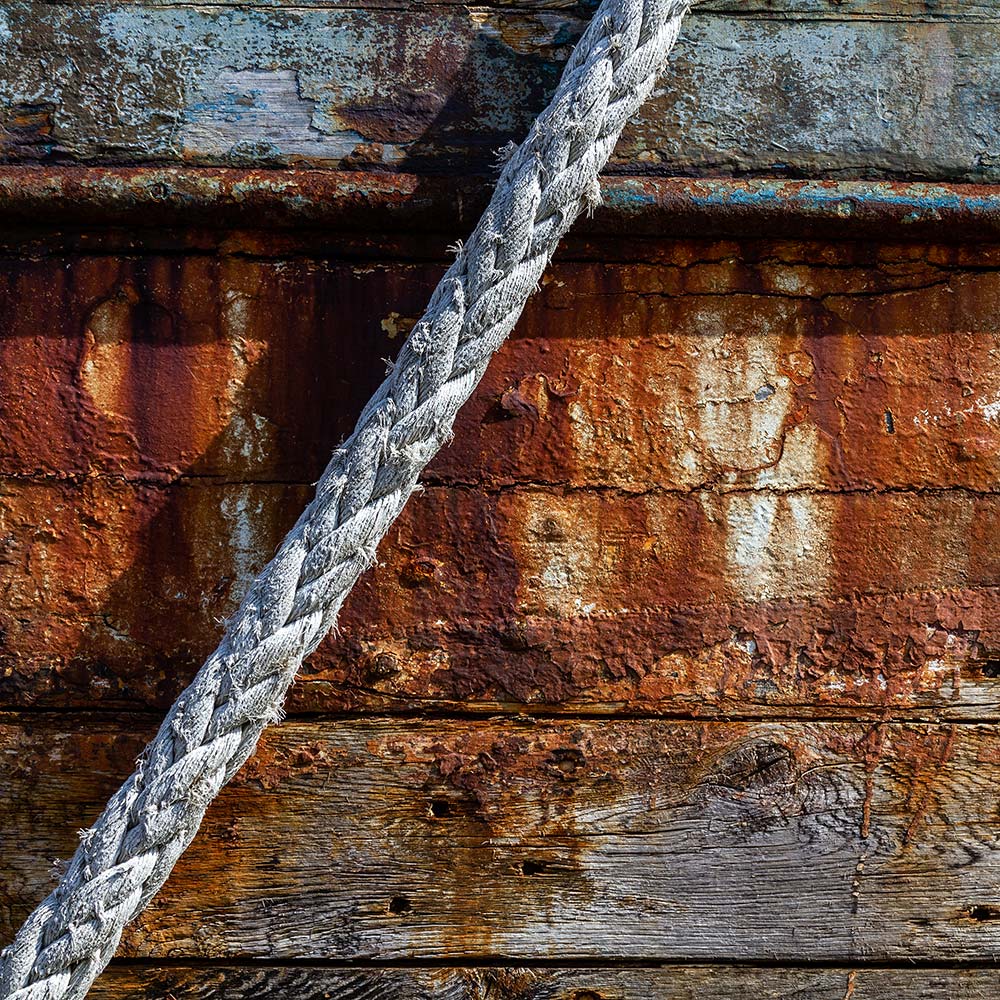
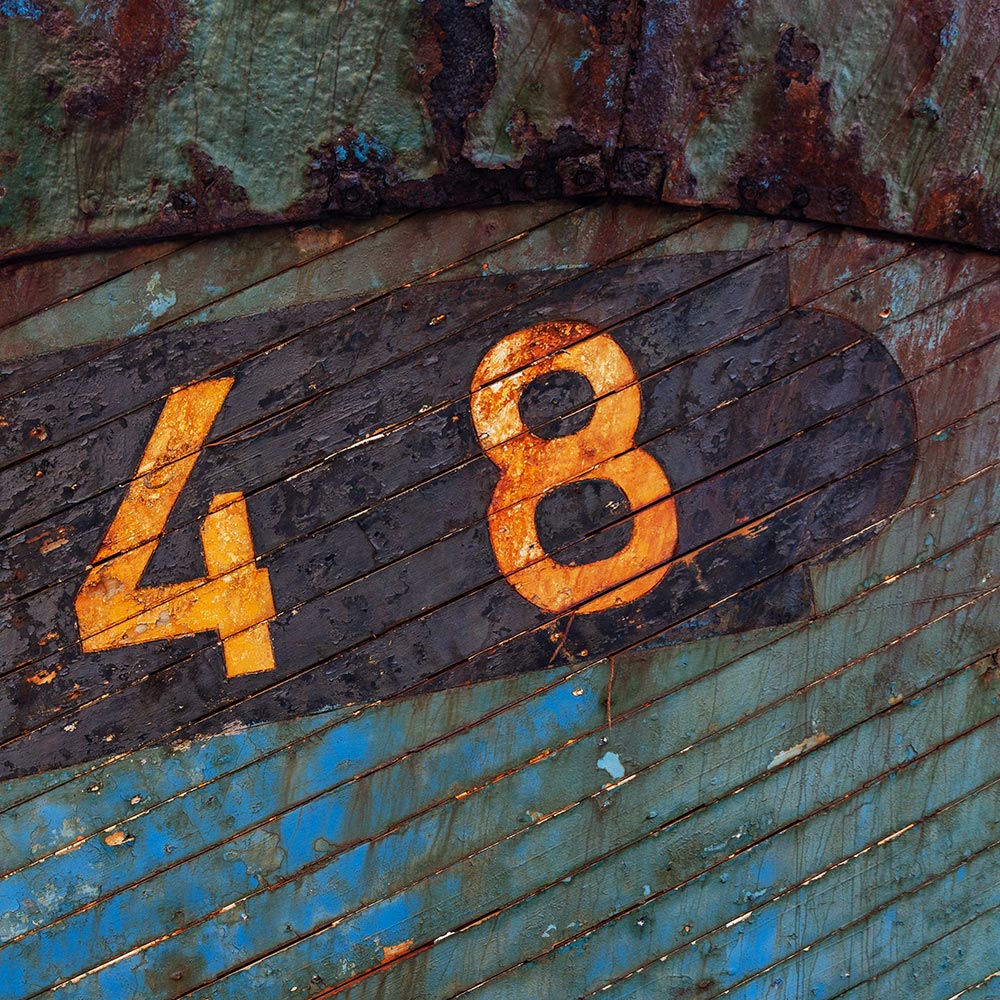
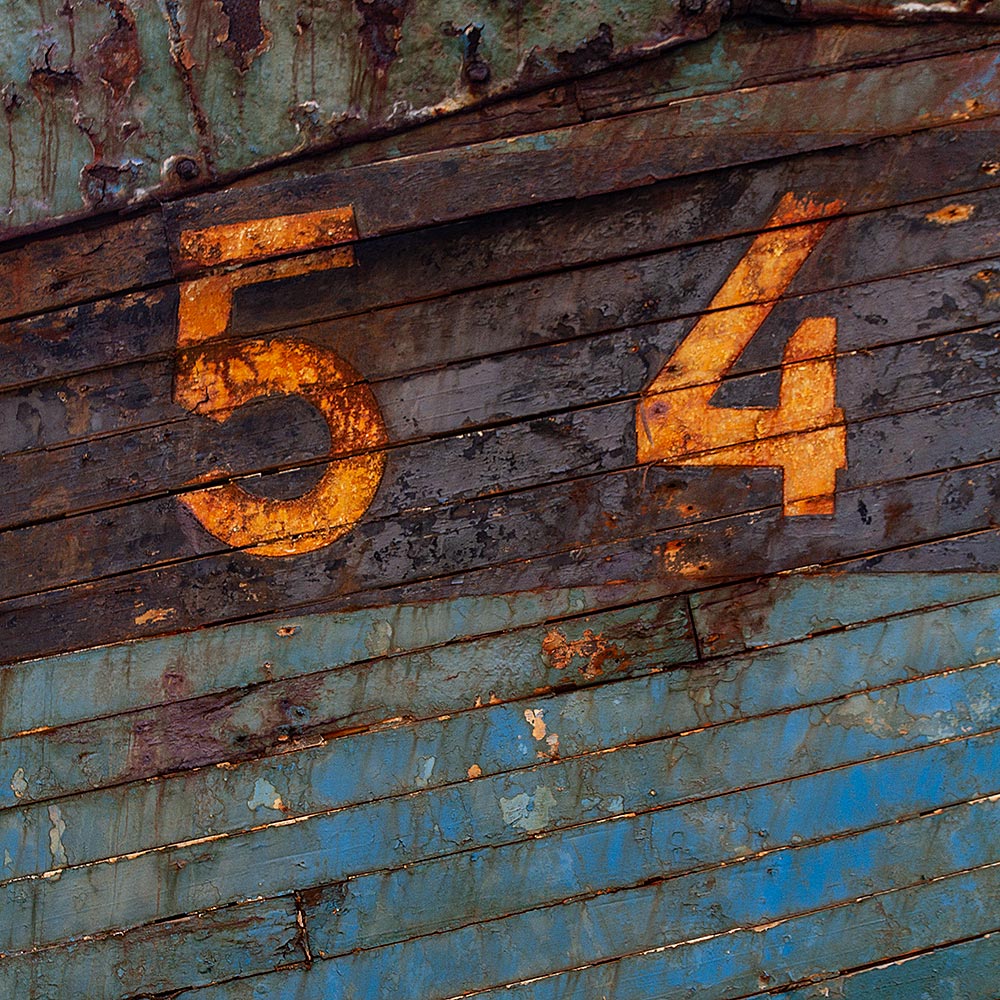
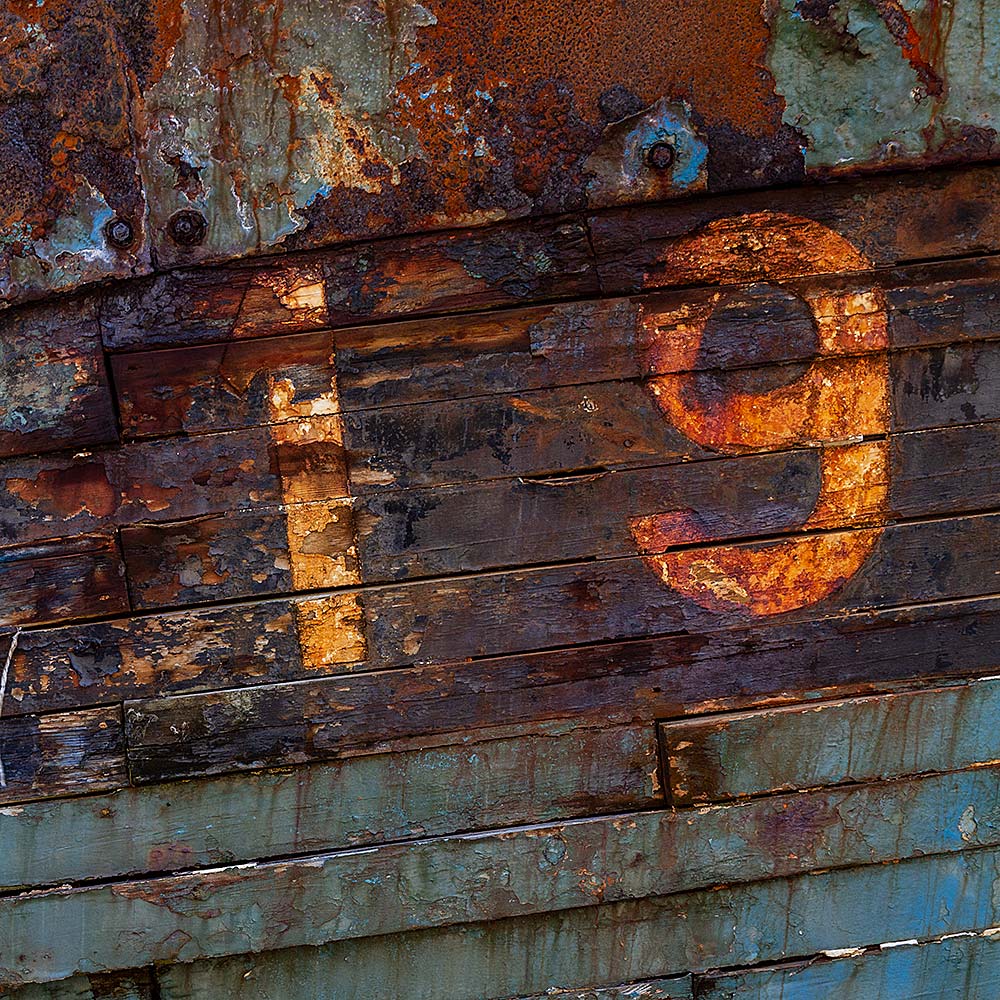
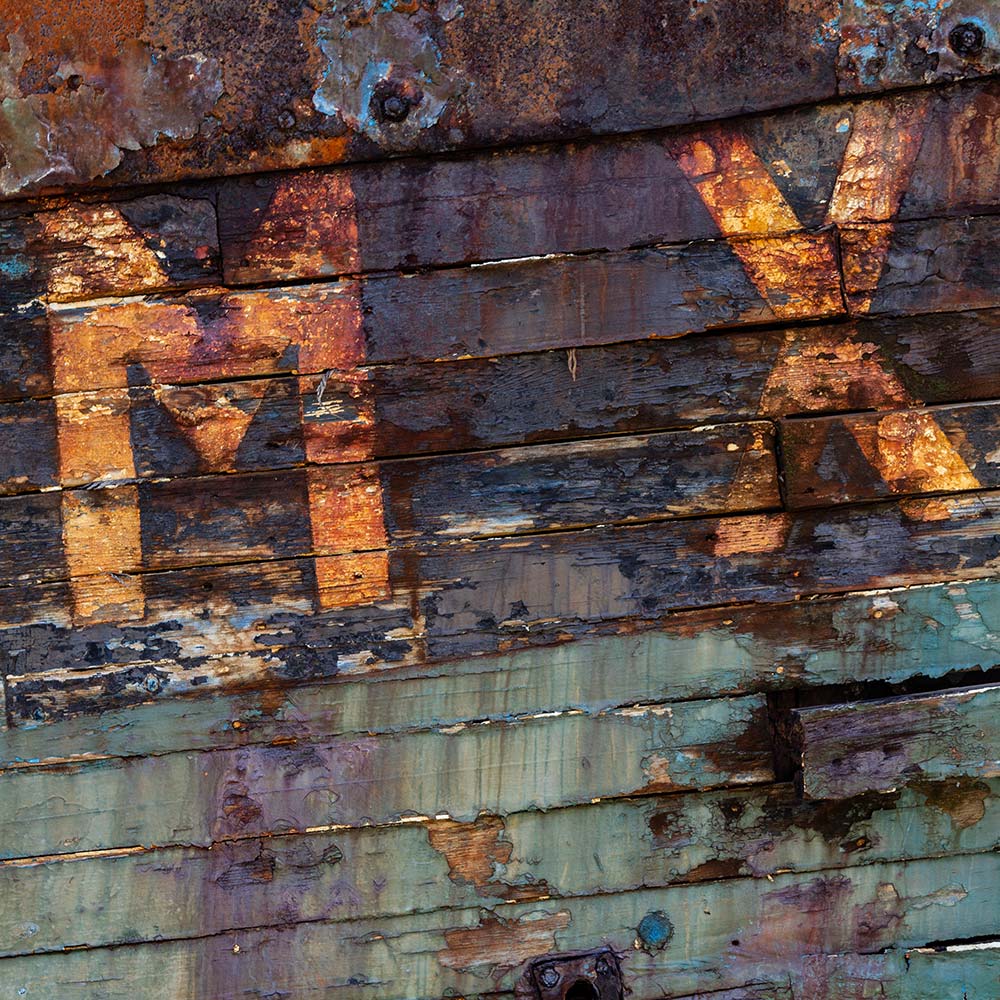
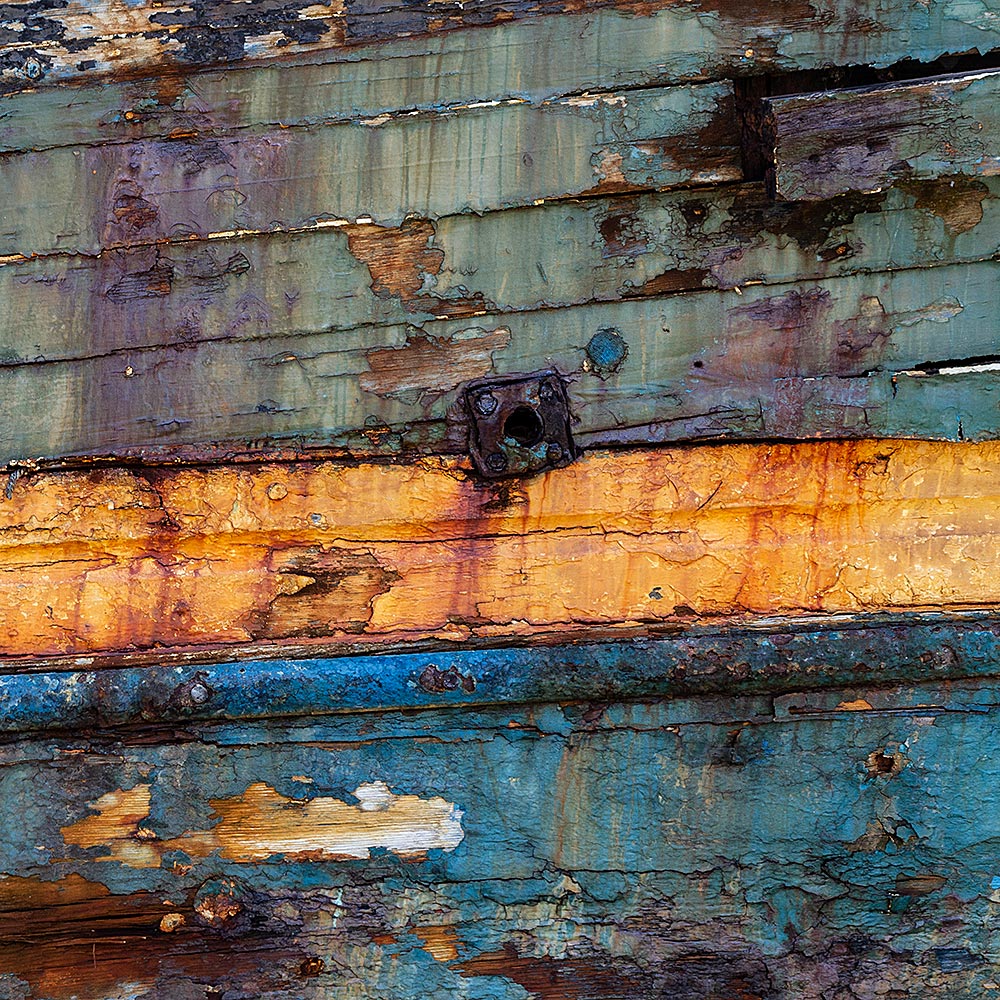
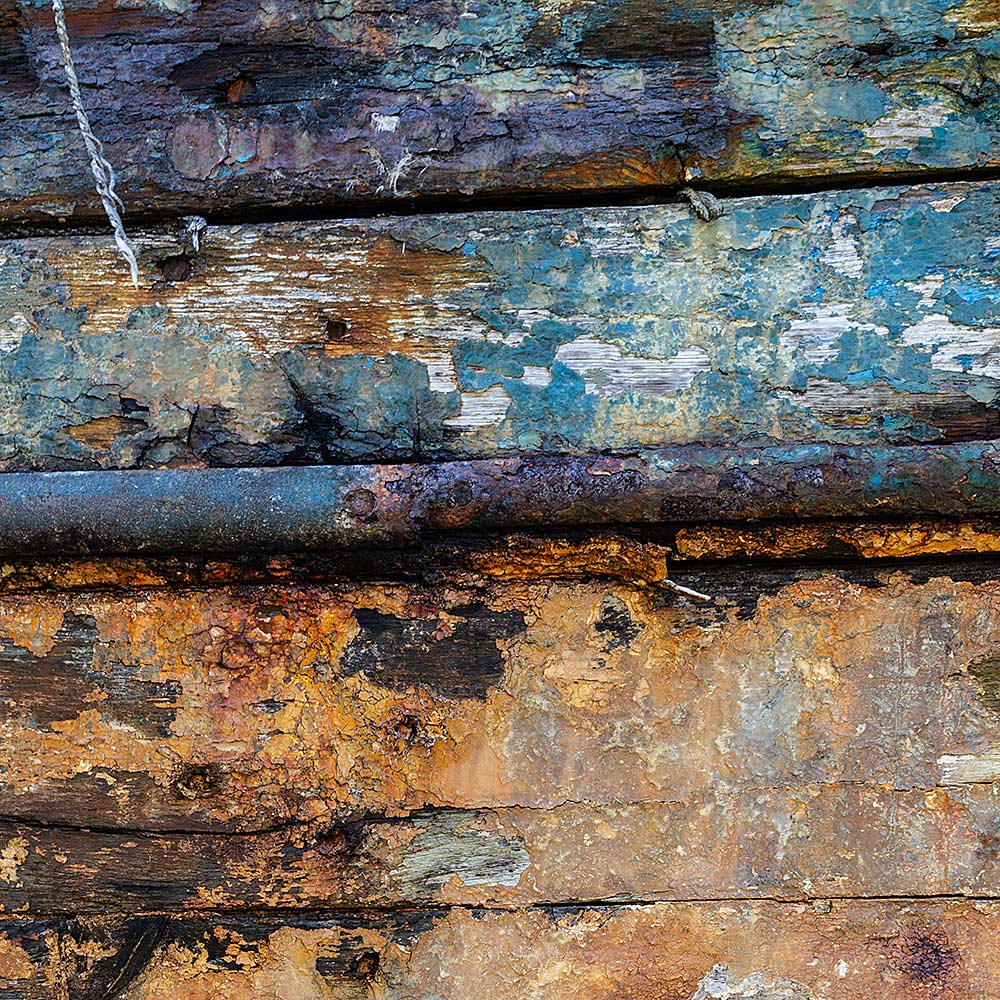
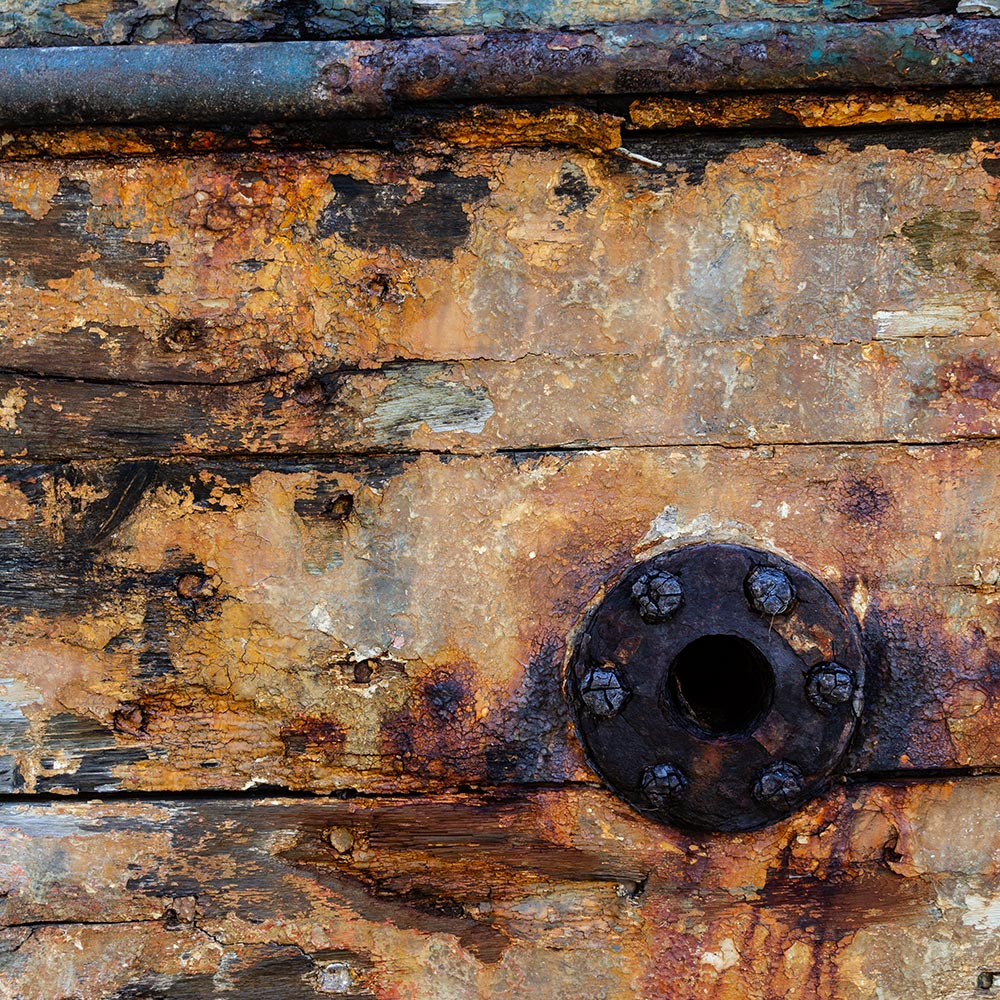
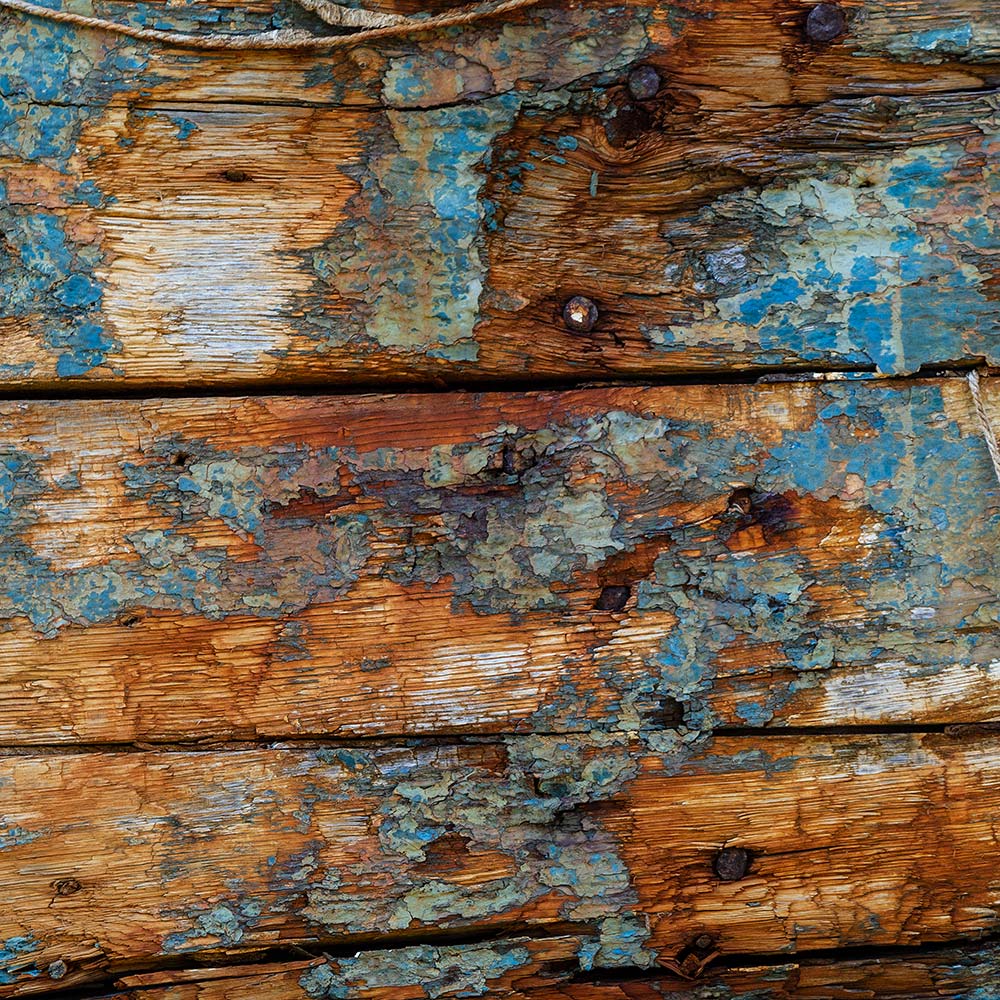
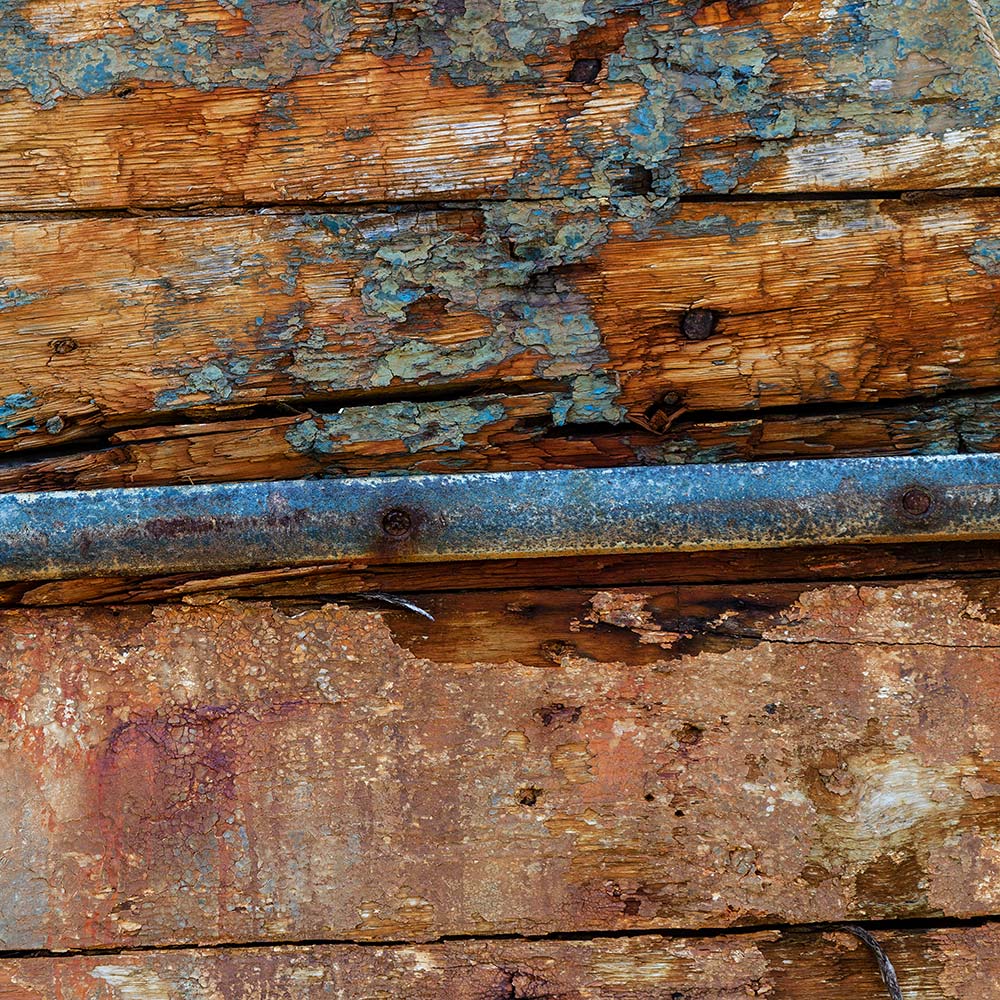
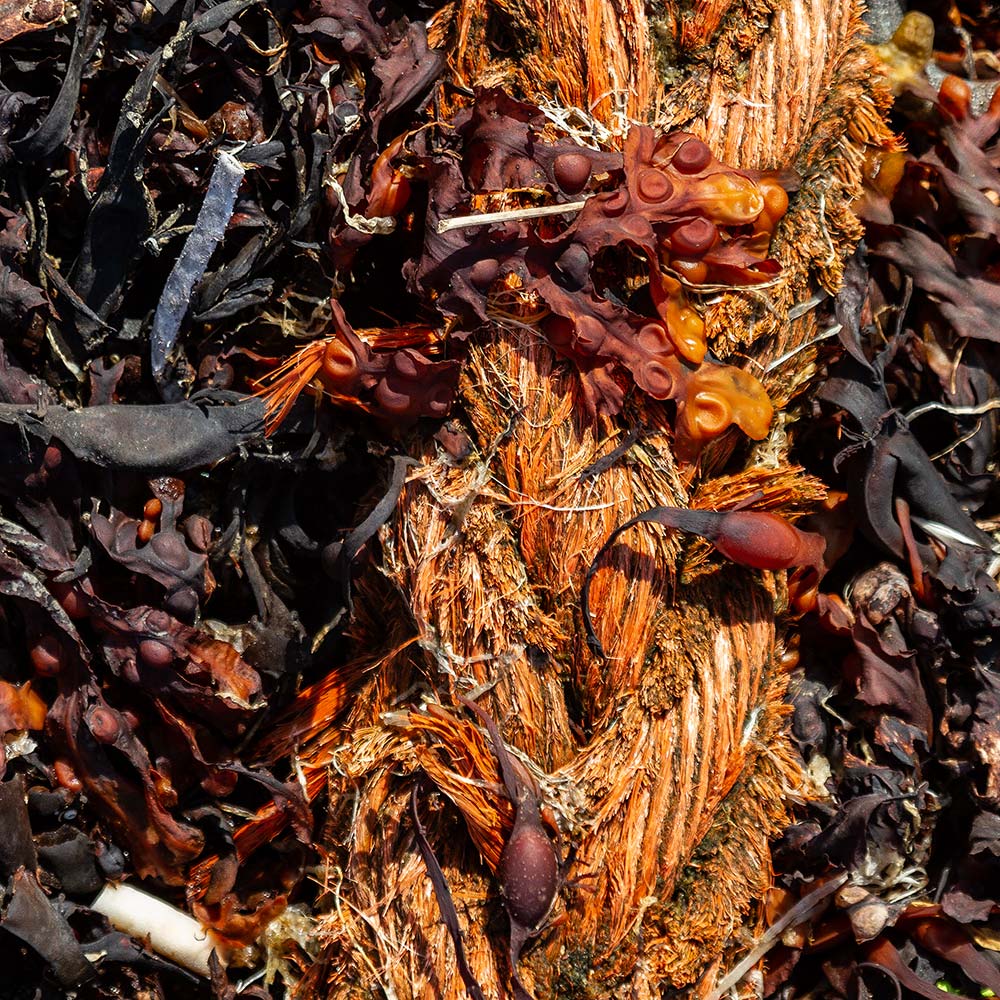
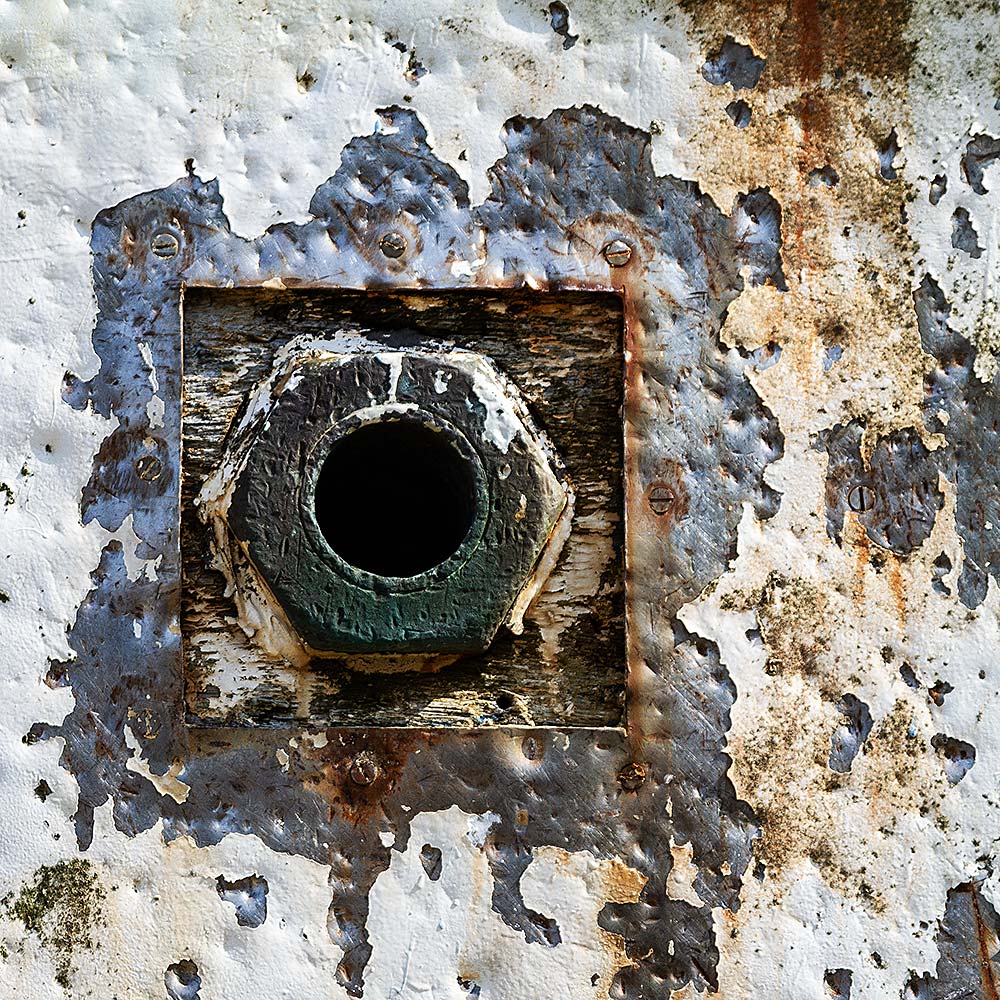
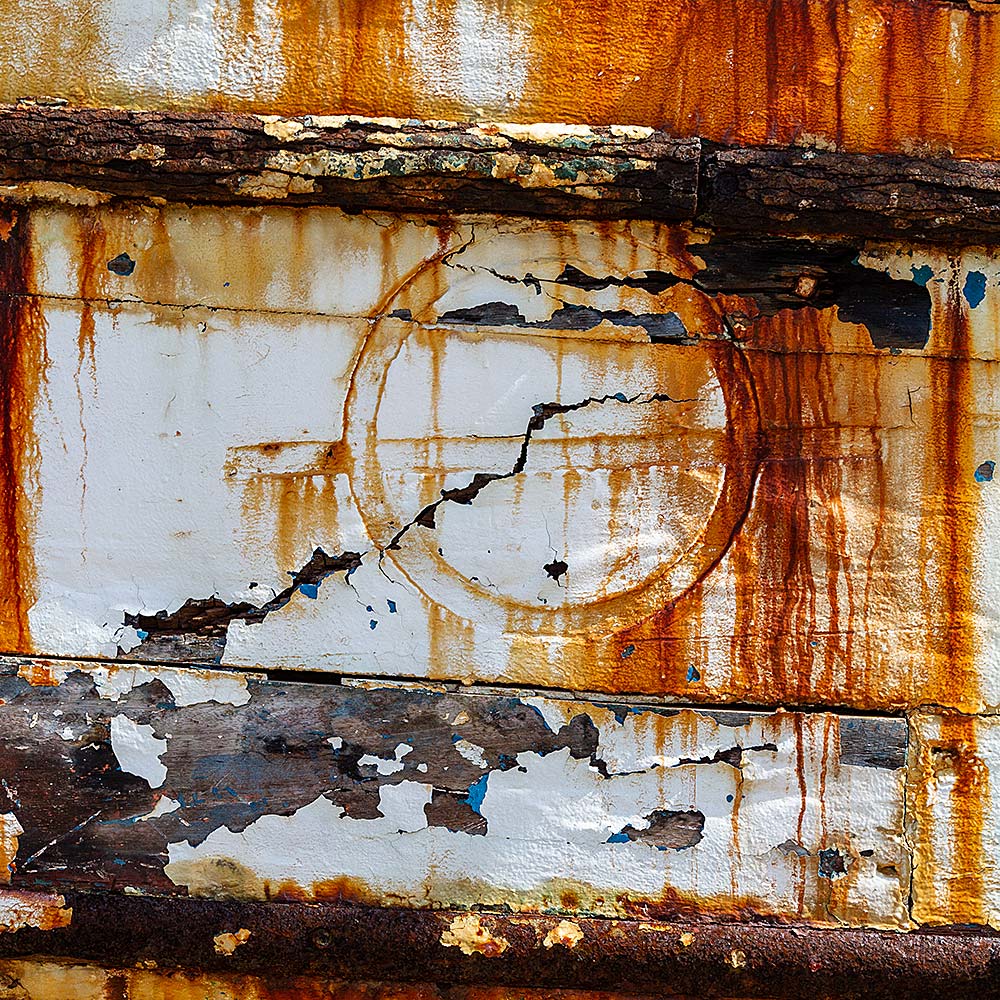
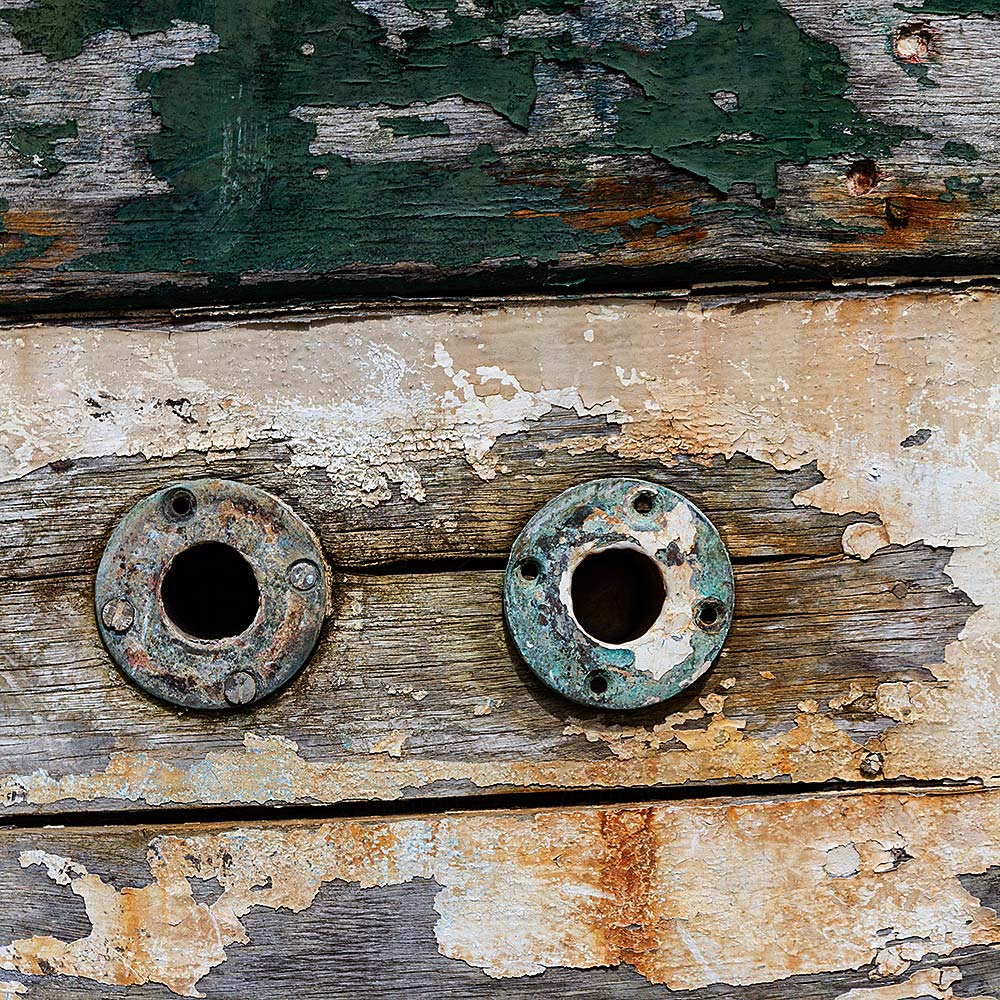
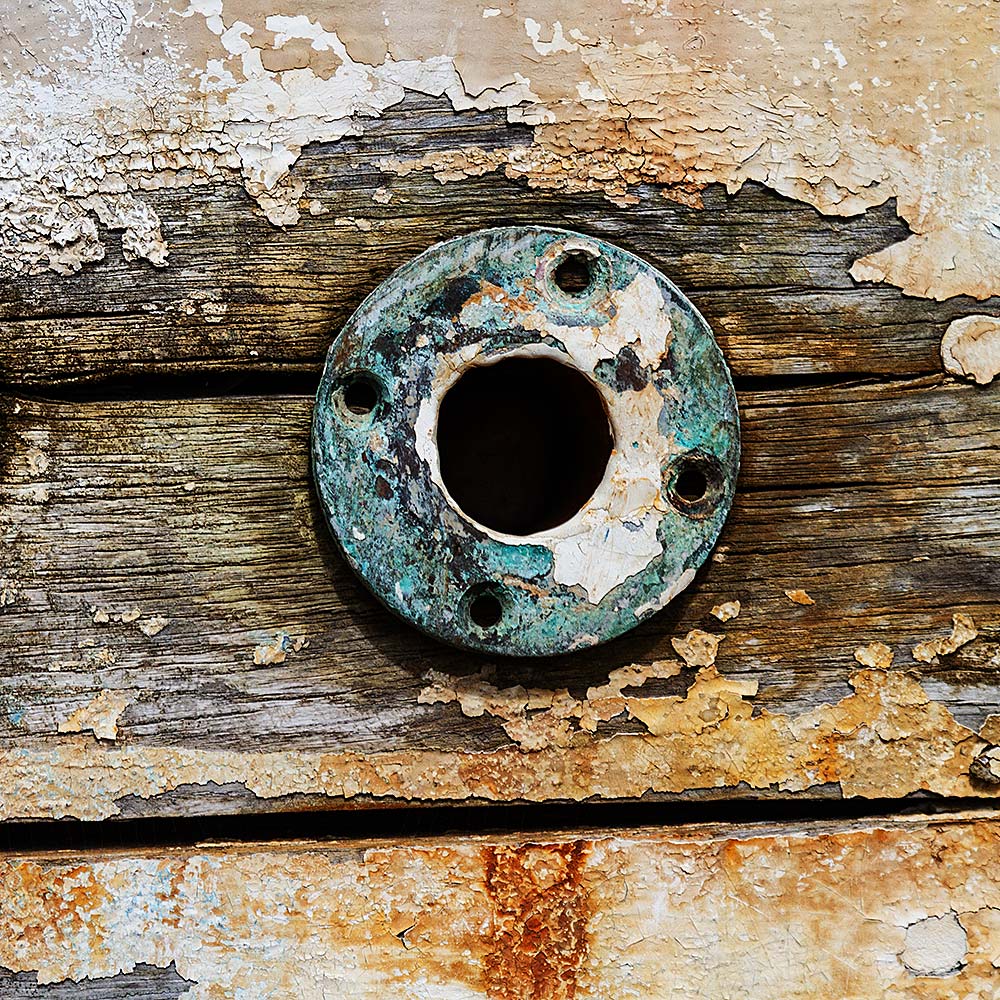
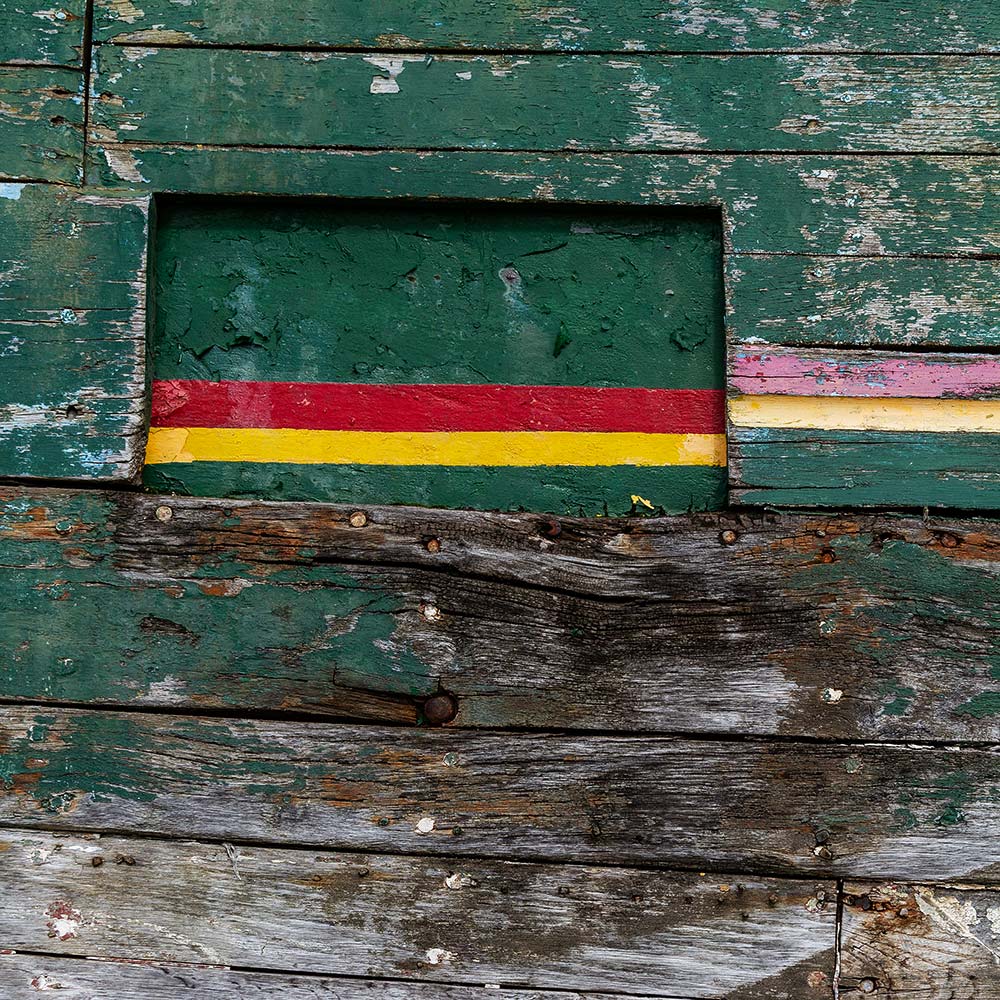
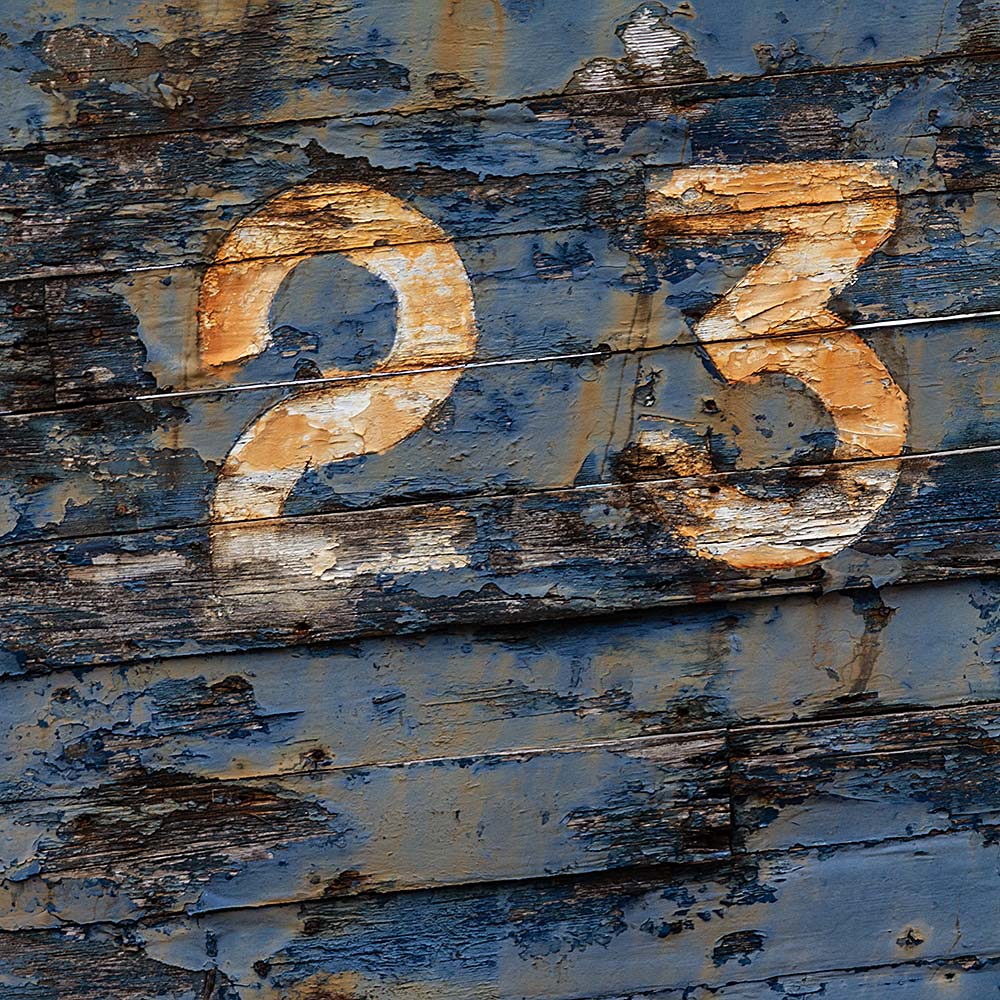
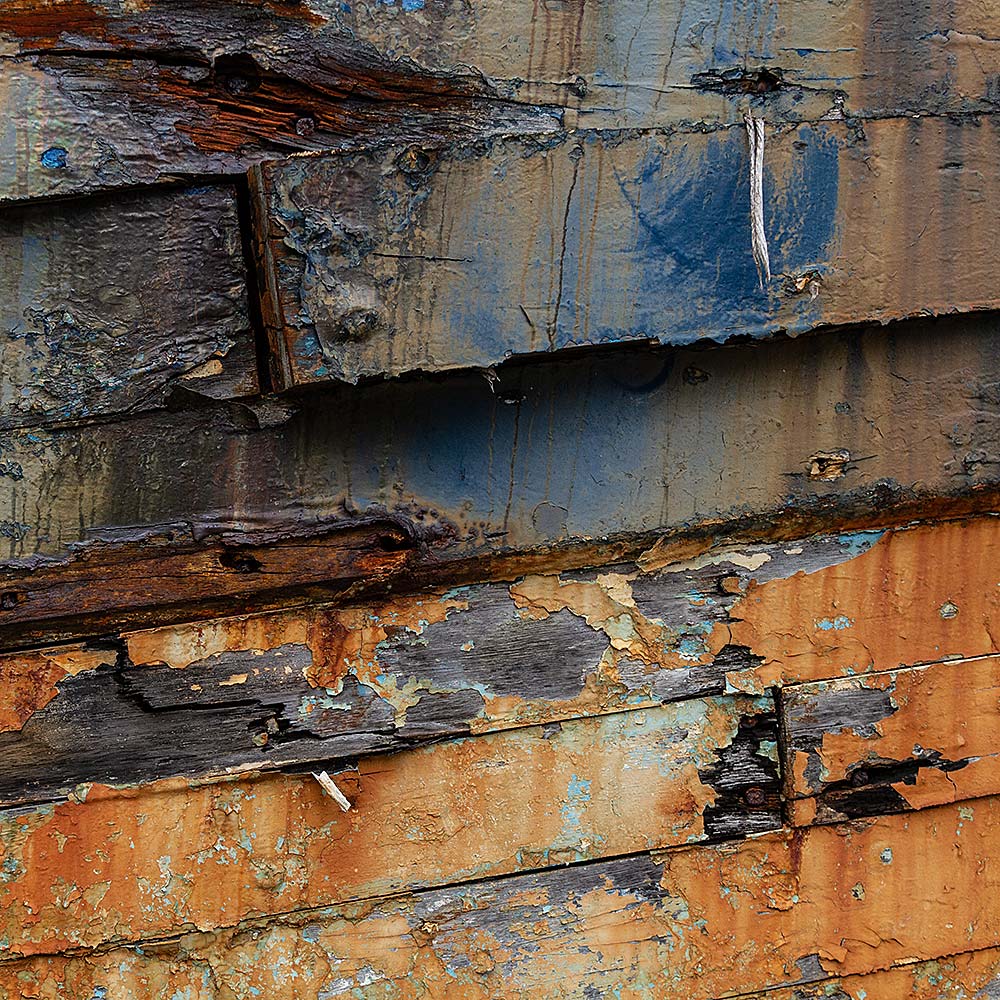
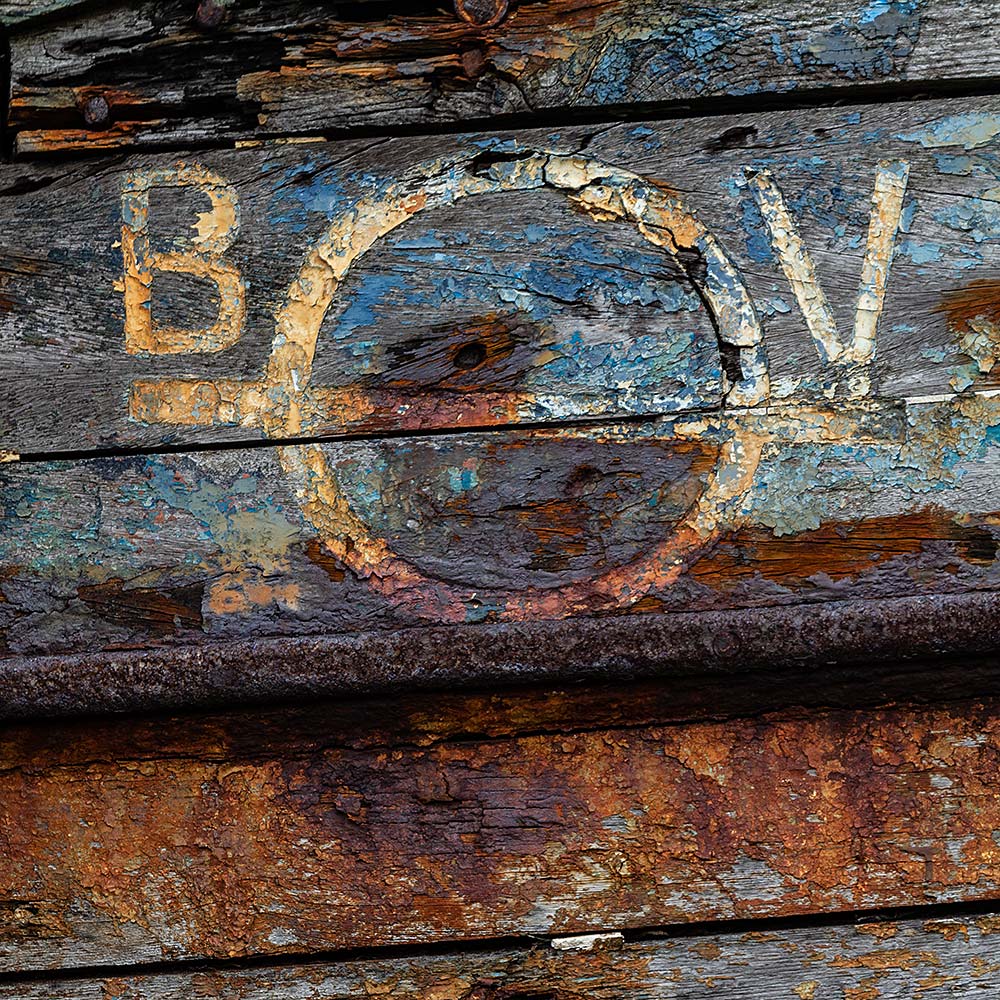
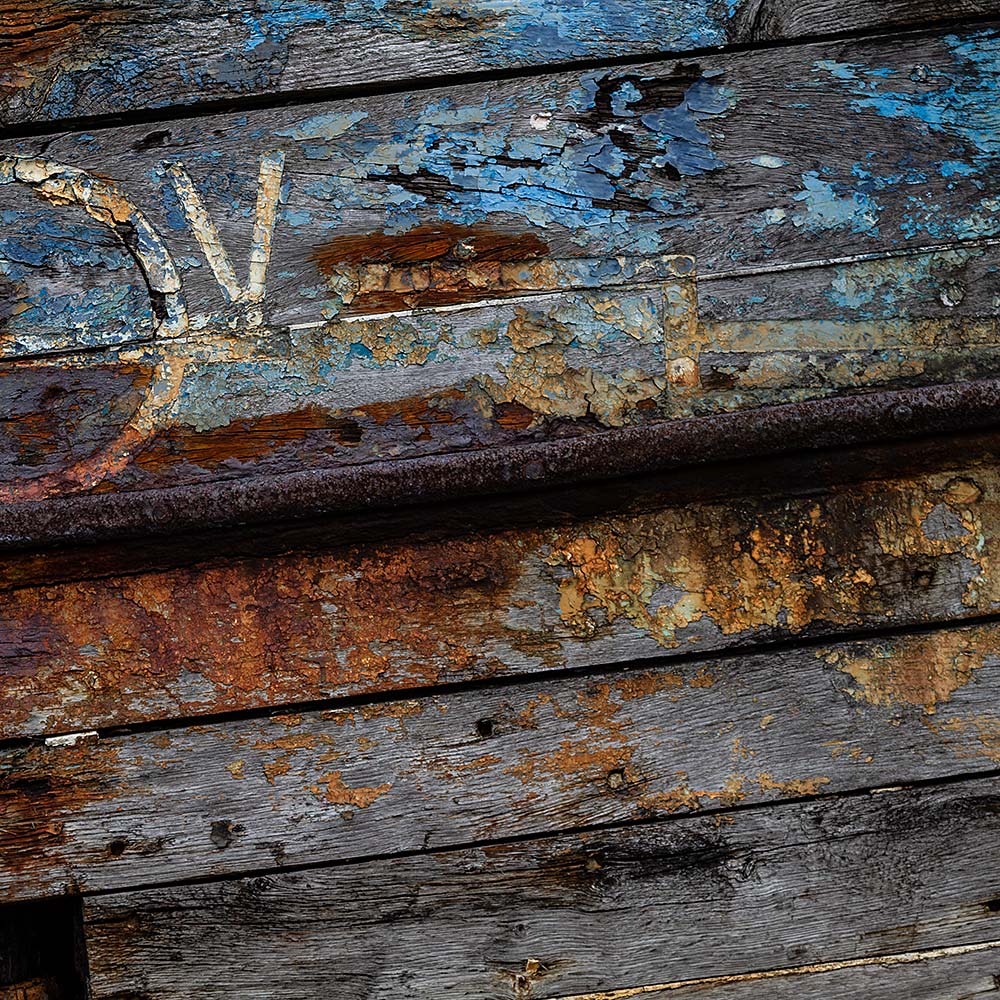
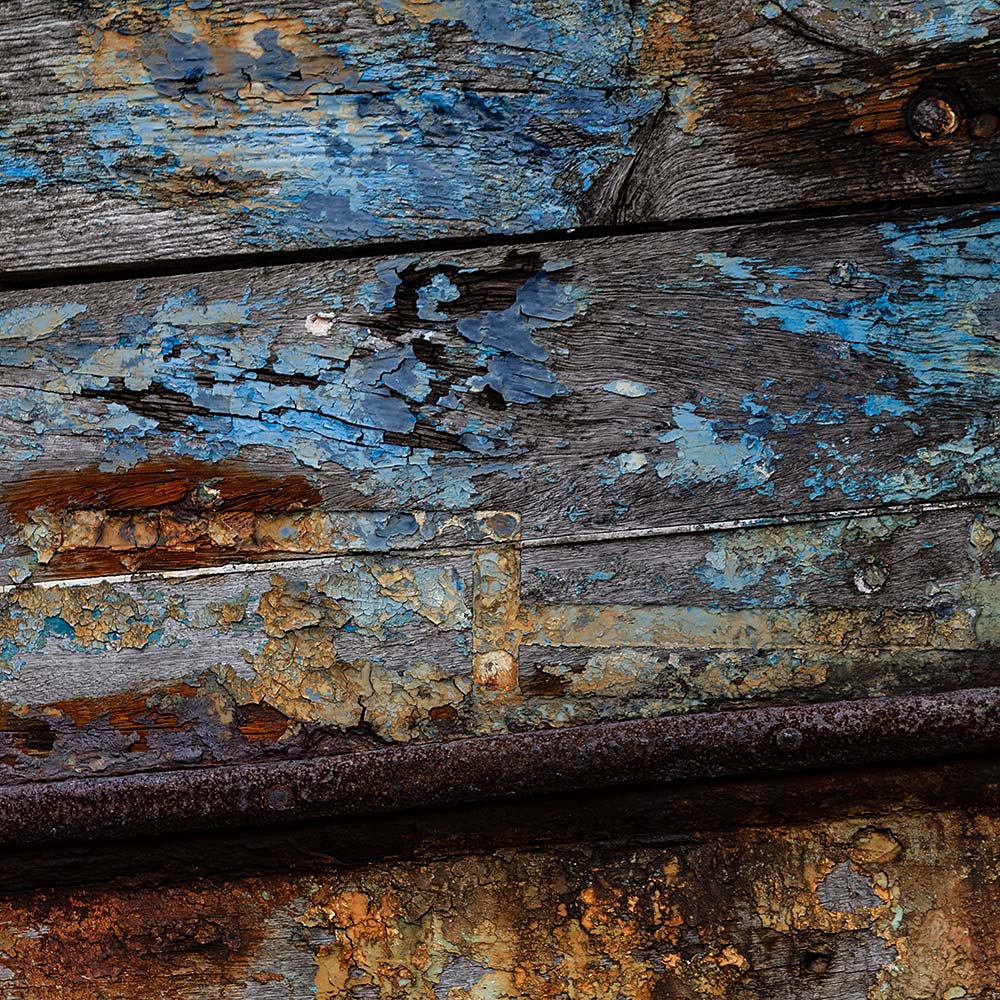
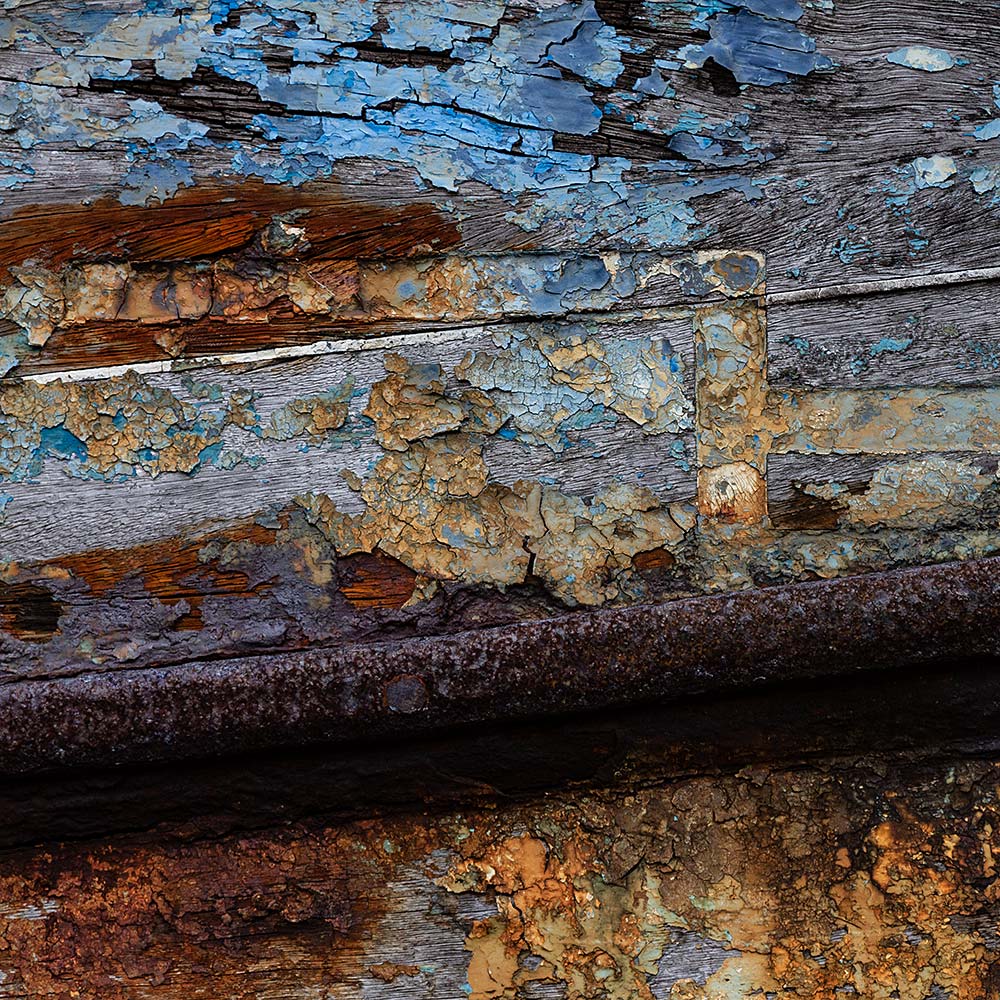
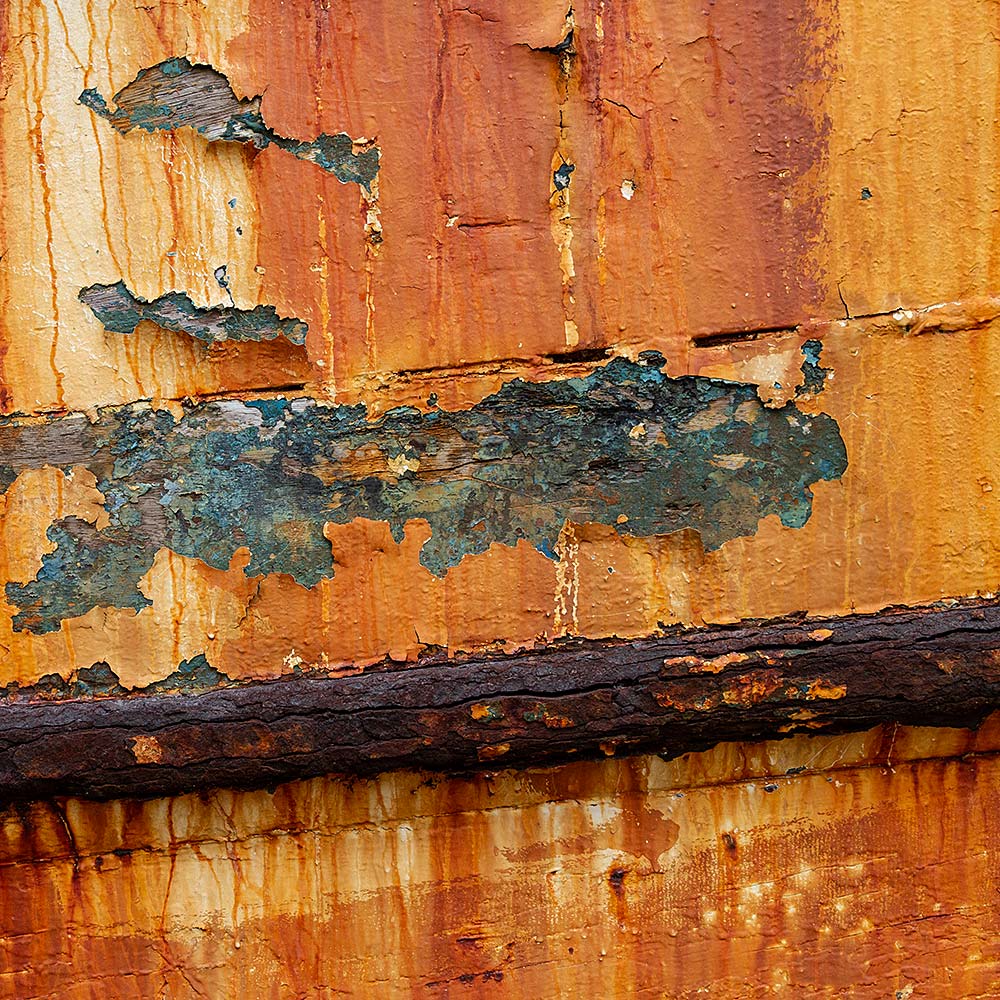
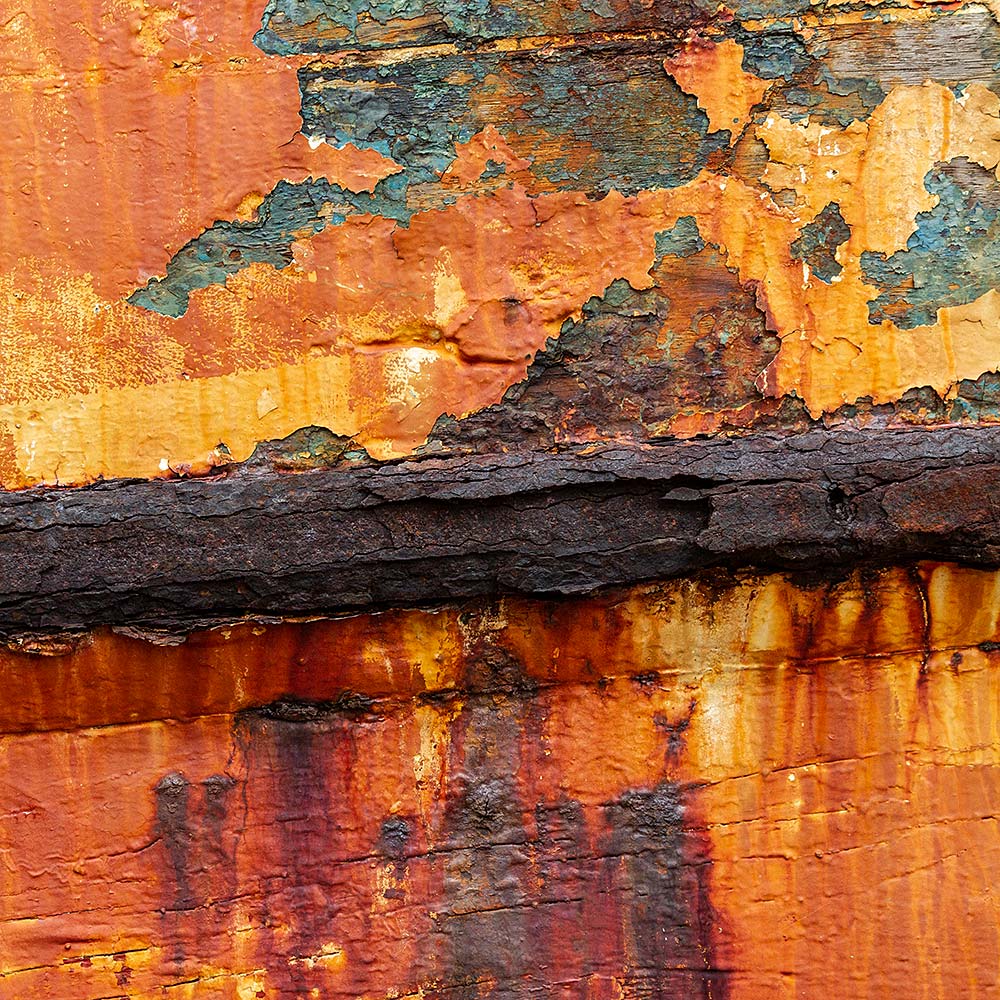
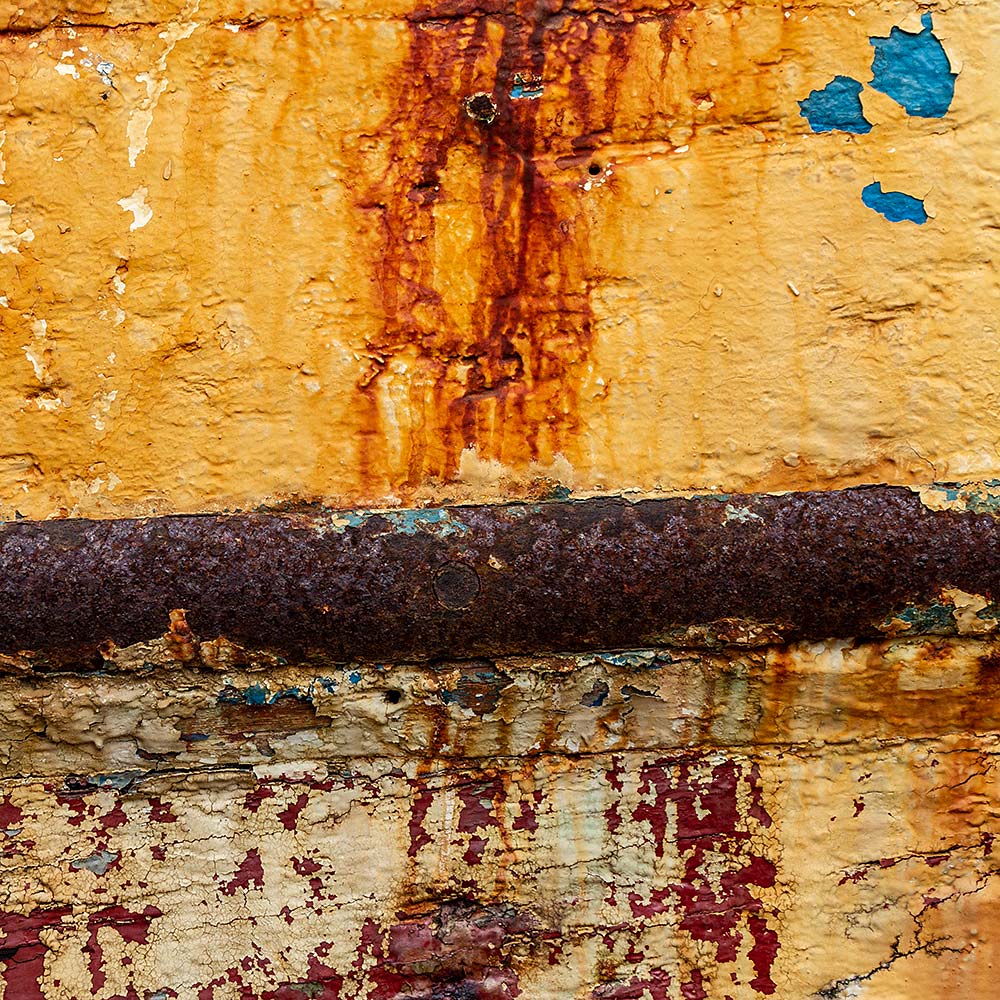
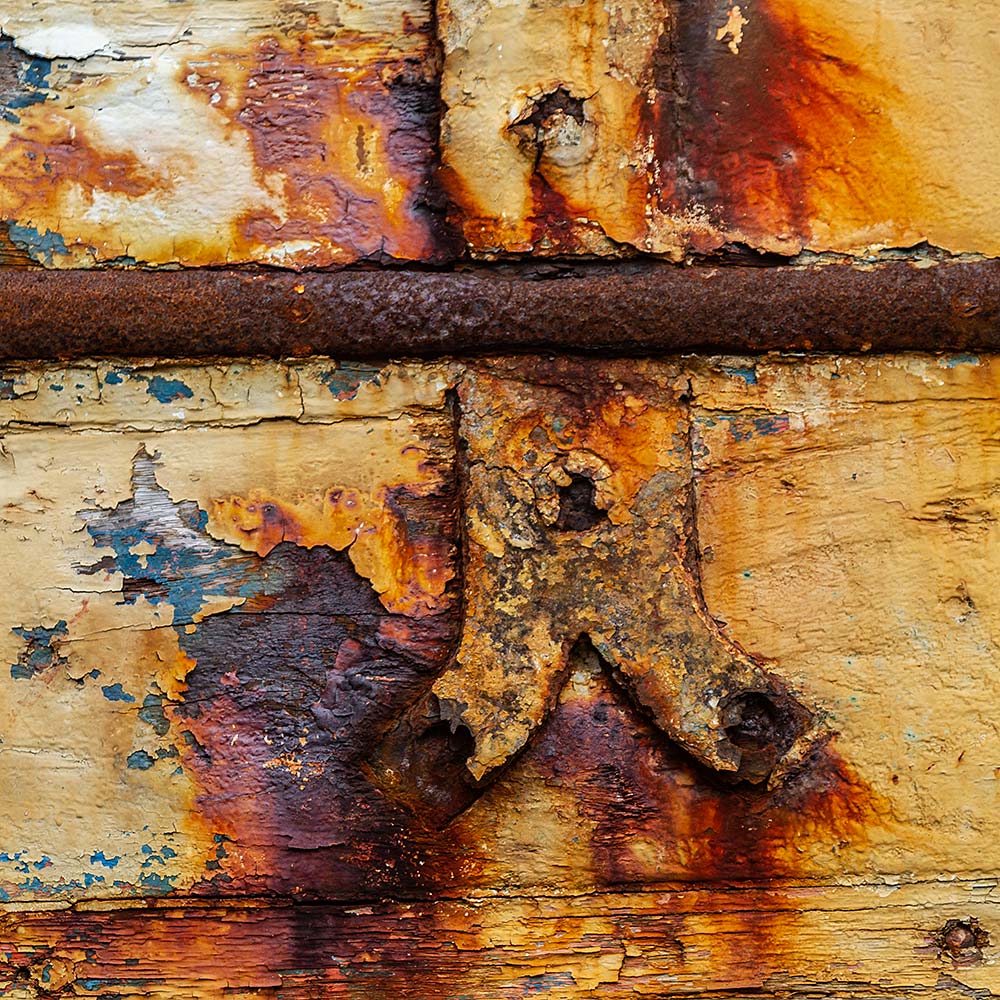
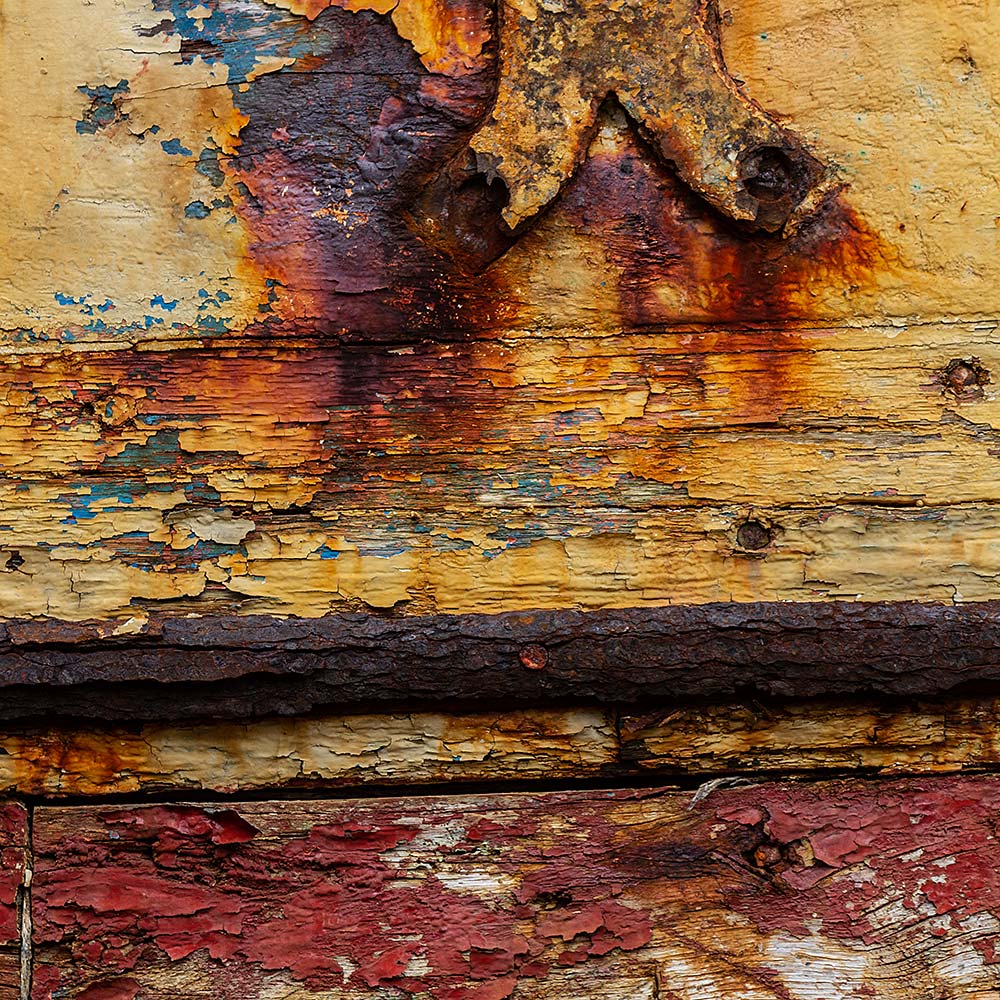
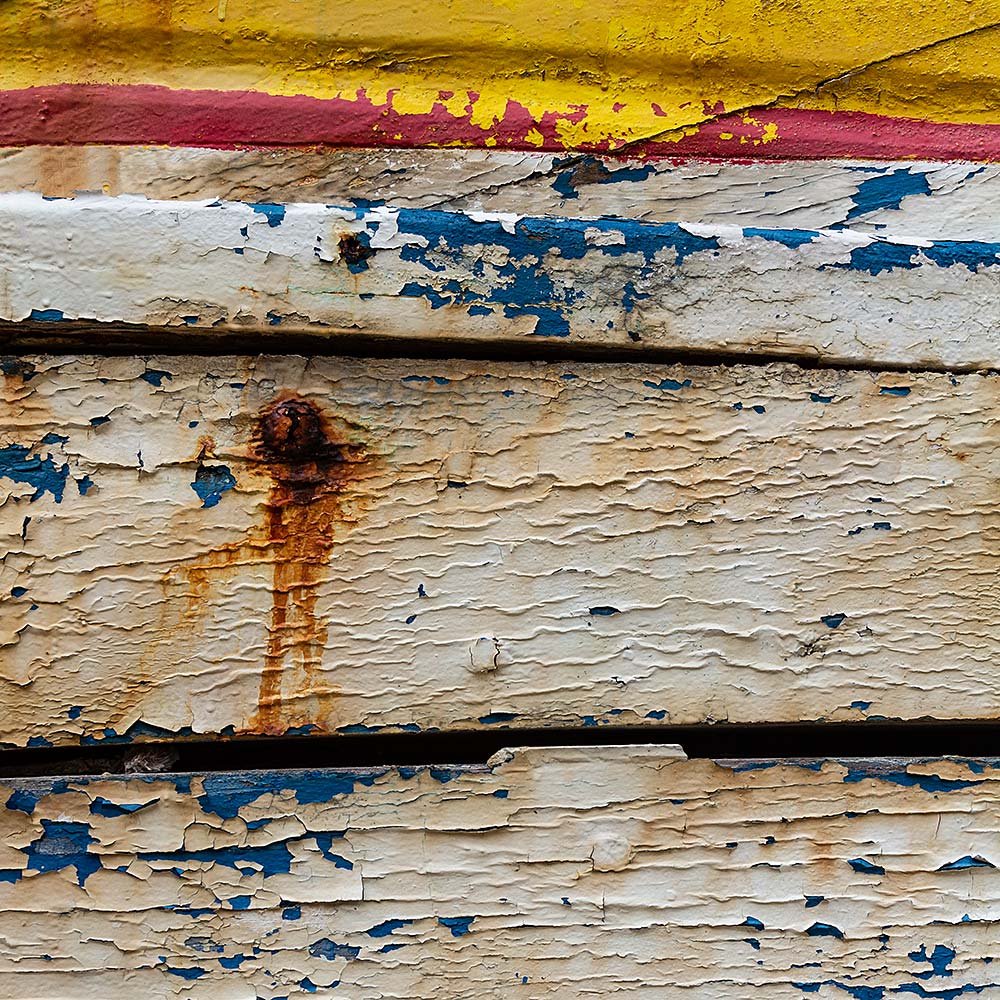
Between the years 1955 and 1964 28 large lobster fishing boats were built in the yard of François-Joseph Keraudren for the Camaret fleet. These were destined to fish the waters off West Africa, in particular the coast of Mauritania, thus leading them to be dubbed "Les Muritaniens" - The Mauritanians
But when France joined the European Community it had to comply with strict Europe-wide fishing quotas. The competition came largely in the form of the Portuguese with their (now illegal) floating nets. Mauritania had ceased to be a French colony in 1960 so these events in turn practically destroyed the lobster stocks and the French boats were retired to the shore of the Steyvel and left to gently rot away. I have returned to the site regularly since 2005, documented their 'progess'
I have spent a lot of time looking at not only the construction of the boats but how they were painted, and how the paint has degraded over time in between repaints and repairs. If one examines the way the numerals were painted you can see that the edges of the design were first scribed into the surface of the wood. These scribed lines are deep, as if made as a wood engraving. I concluded that the purpose was to give support to the edges of the painted letters and numerals, more weight, more depth. Studying this gave me the basis for the deliniation of the designs scored into the surface of my works in oils. It can be clearly seen in series such as 'White Space', 'Penumbra' and 'Azimuth'.
Camaret-sur-Mer is a twin town with St Ives in Cornwall, the artistic communities seem rarely to interact yet have so much in common. I recently bought a book from the Penwith Gallery about the drawings and scuptural work of Ben Nicholson. He too used this technique it appears, scoring into the surface. I wonder if his move to St Ives, a historic fishing community in Penwith, Cornwall similarly inspired him in this way?
Any questions?
If you have any questions regarding this blog please send me an email.
